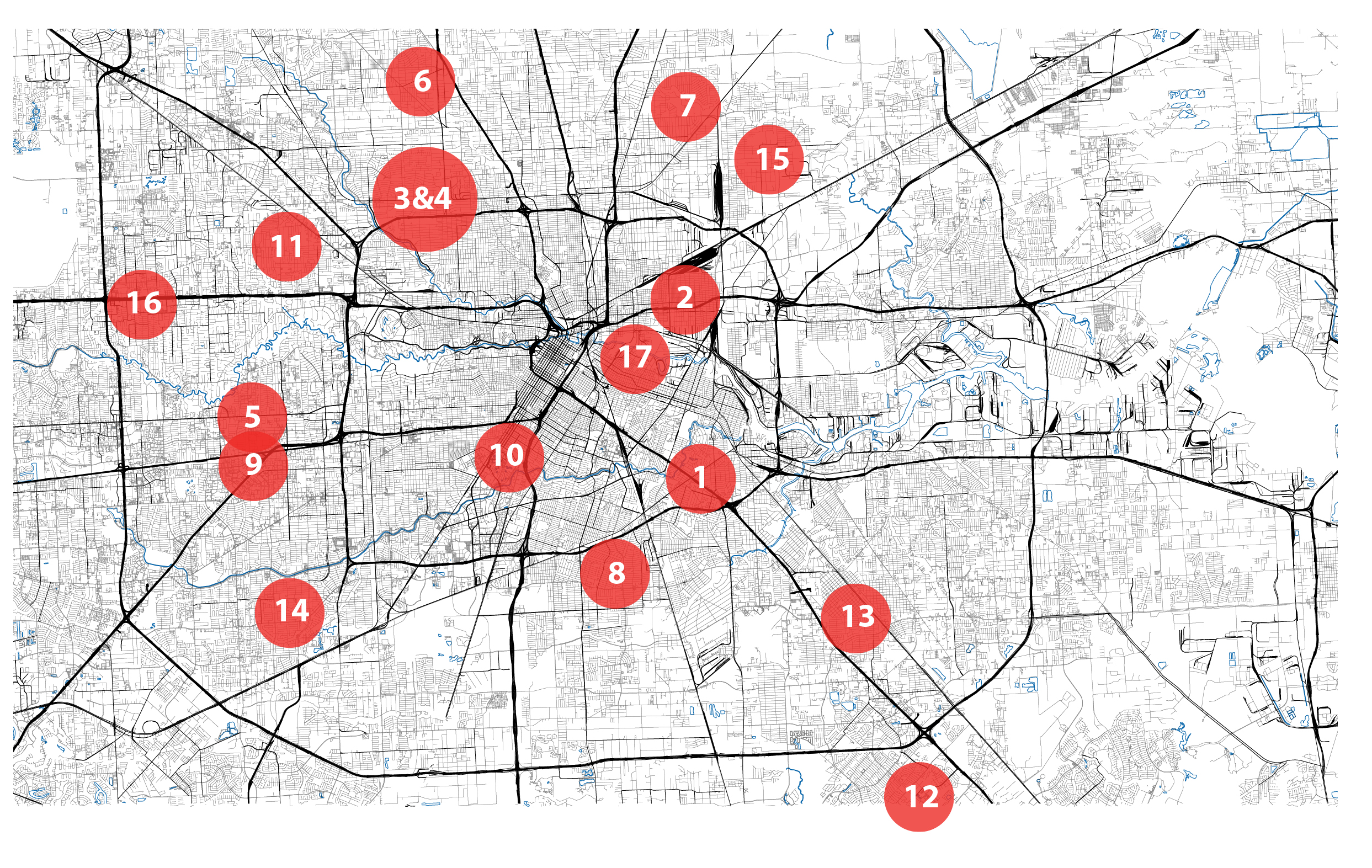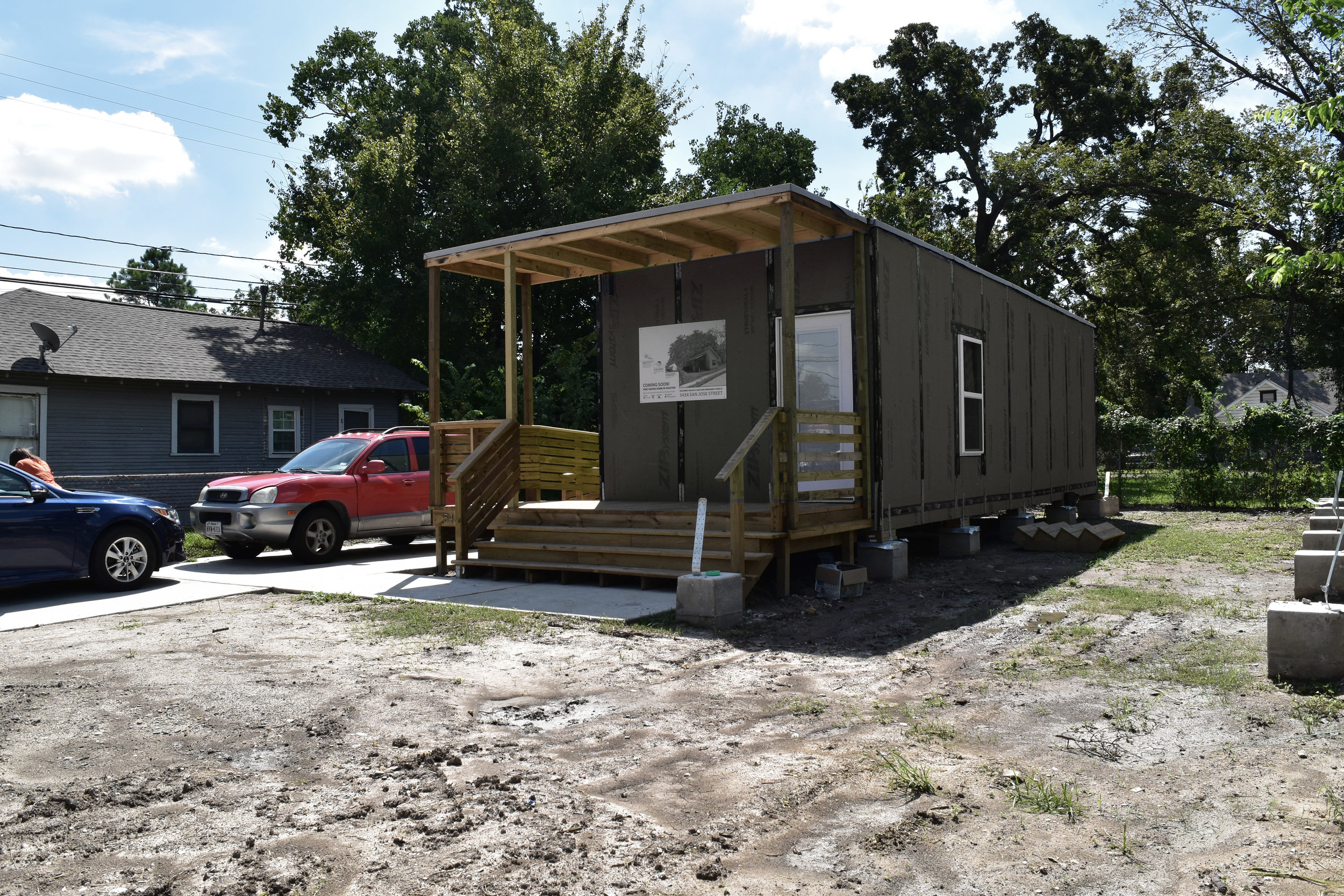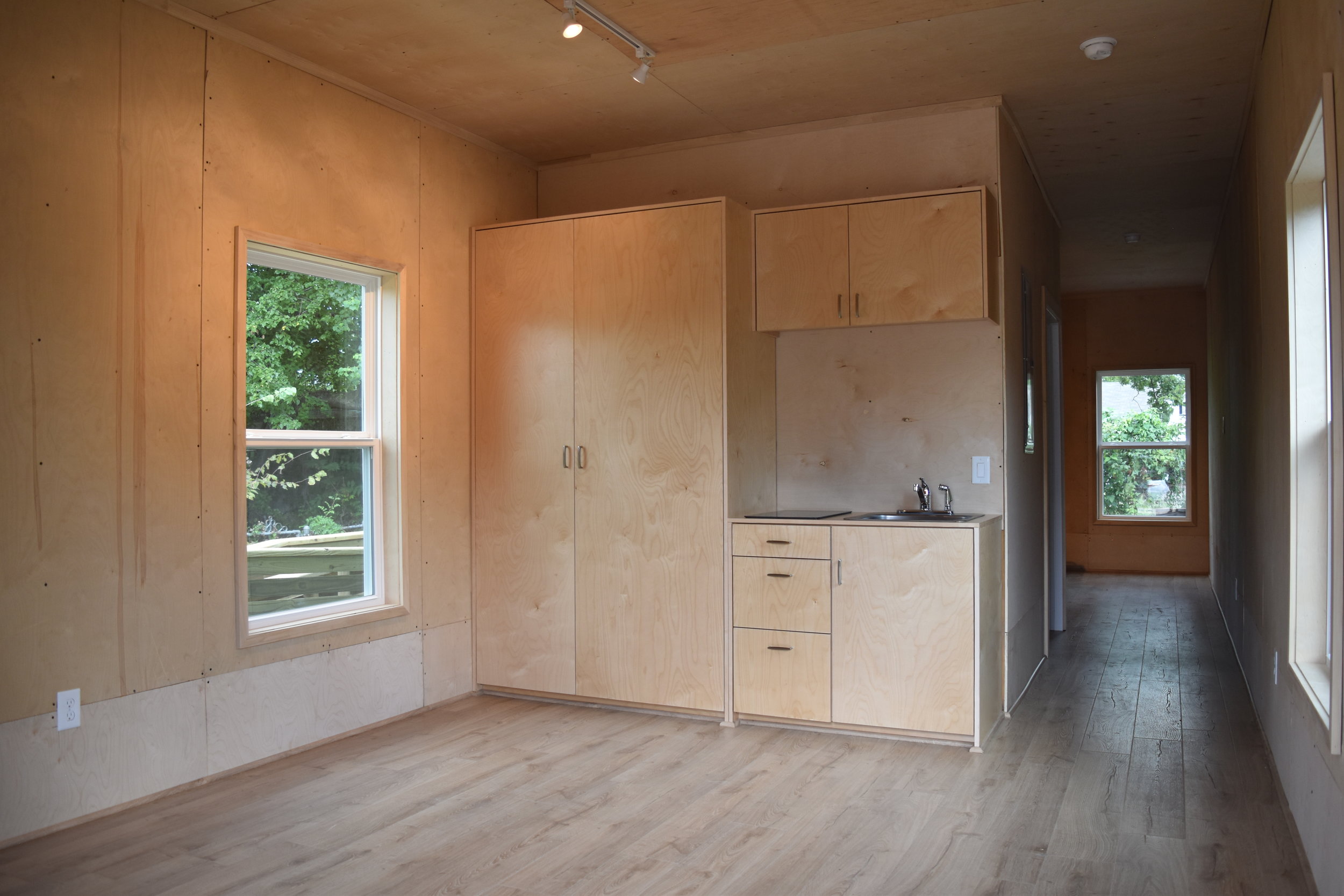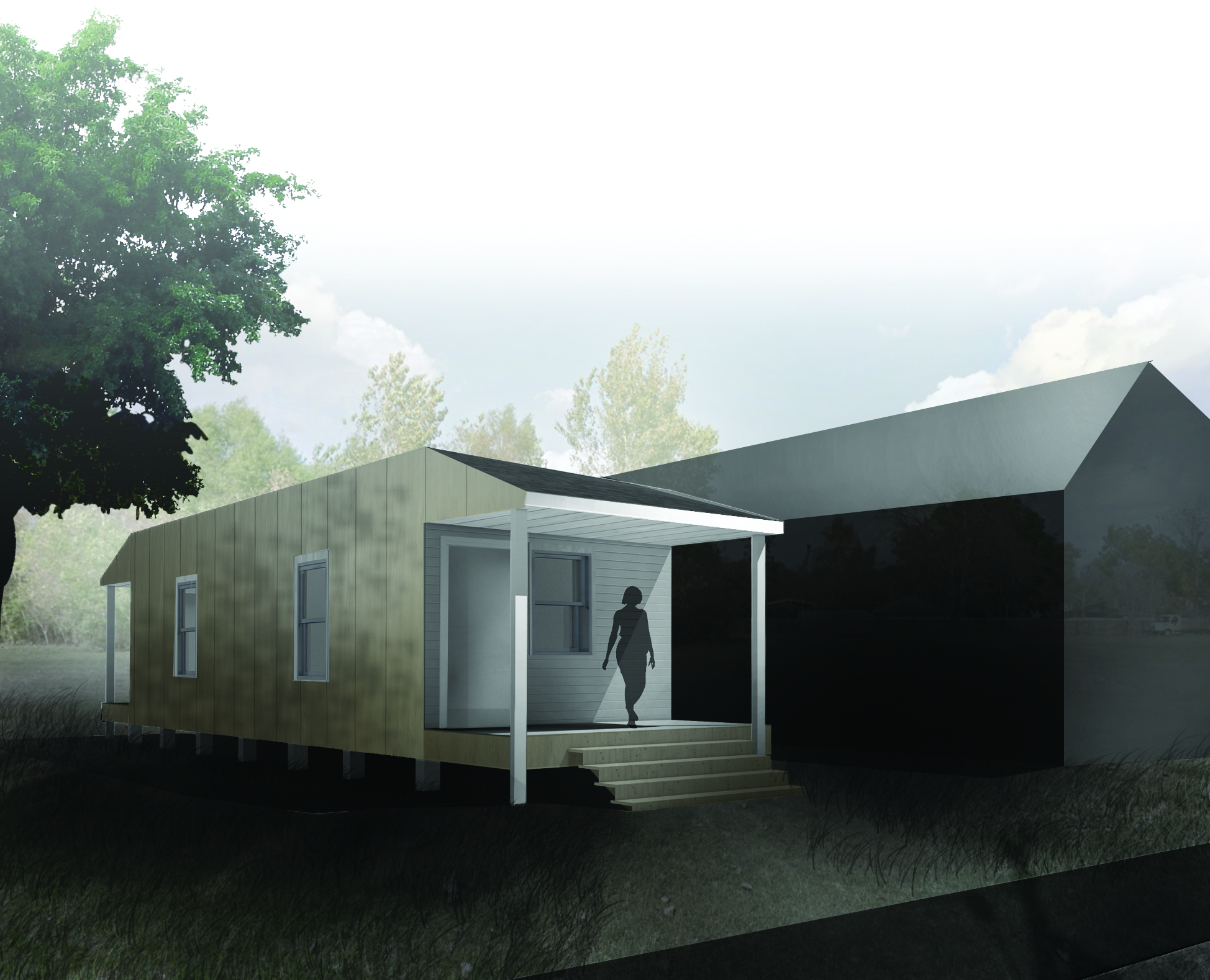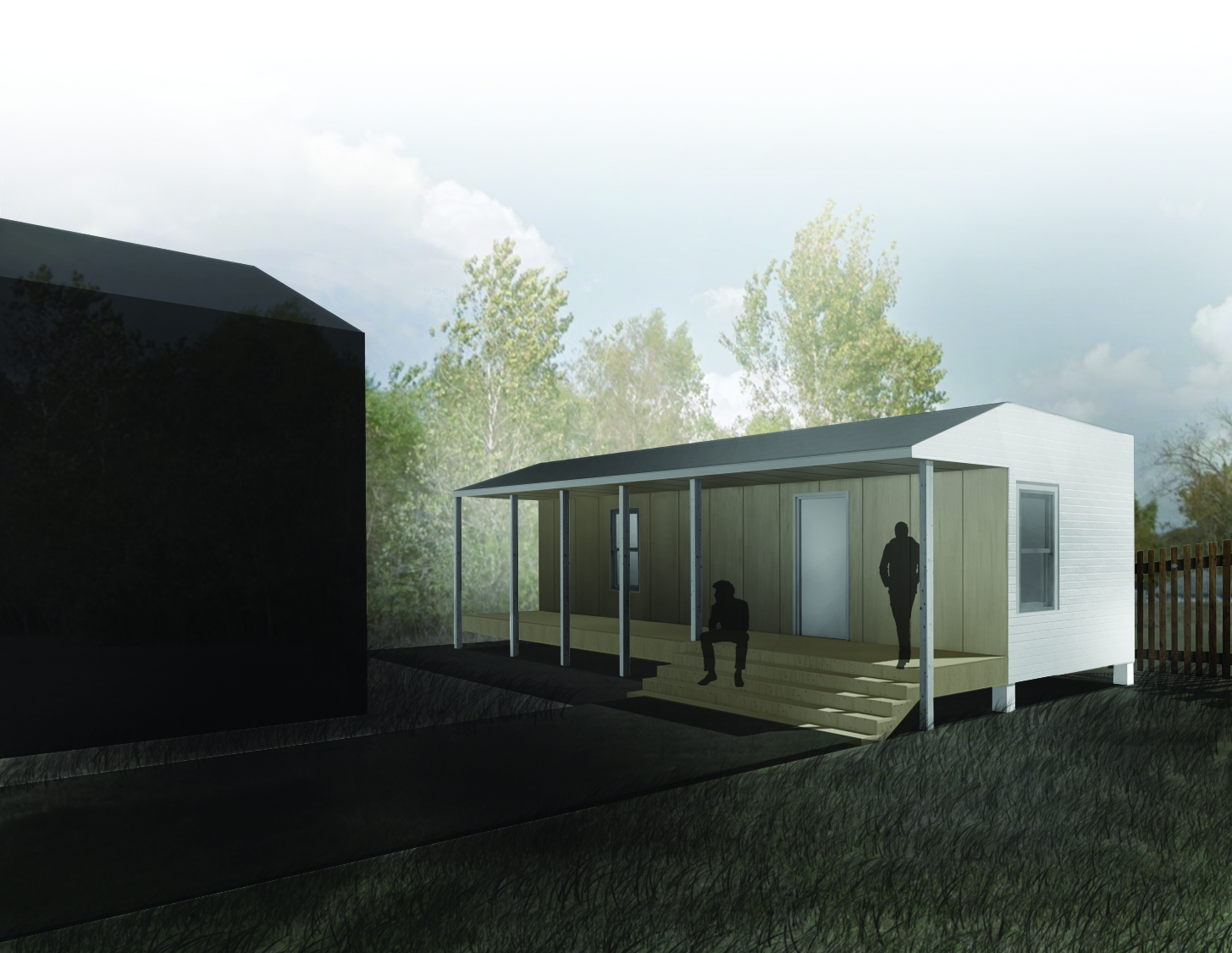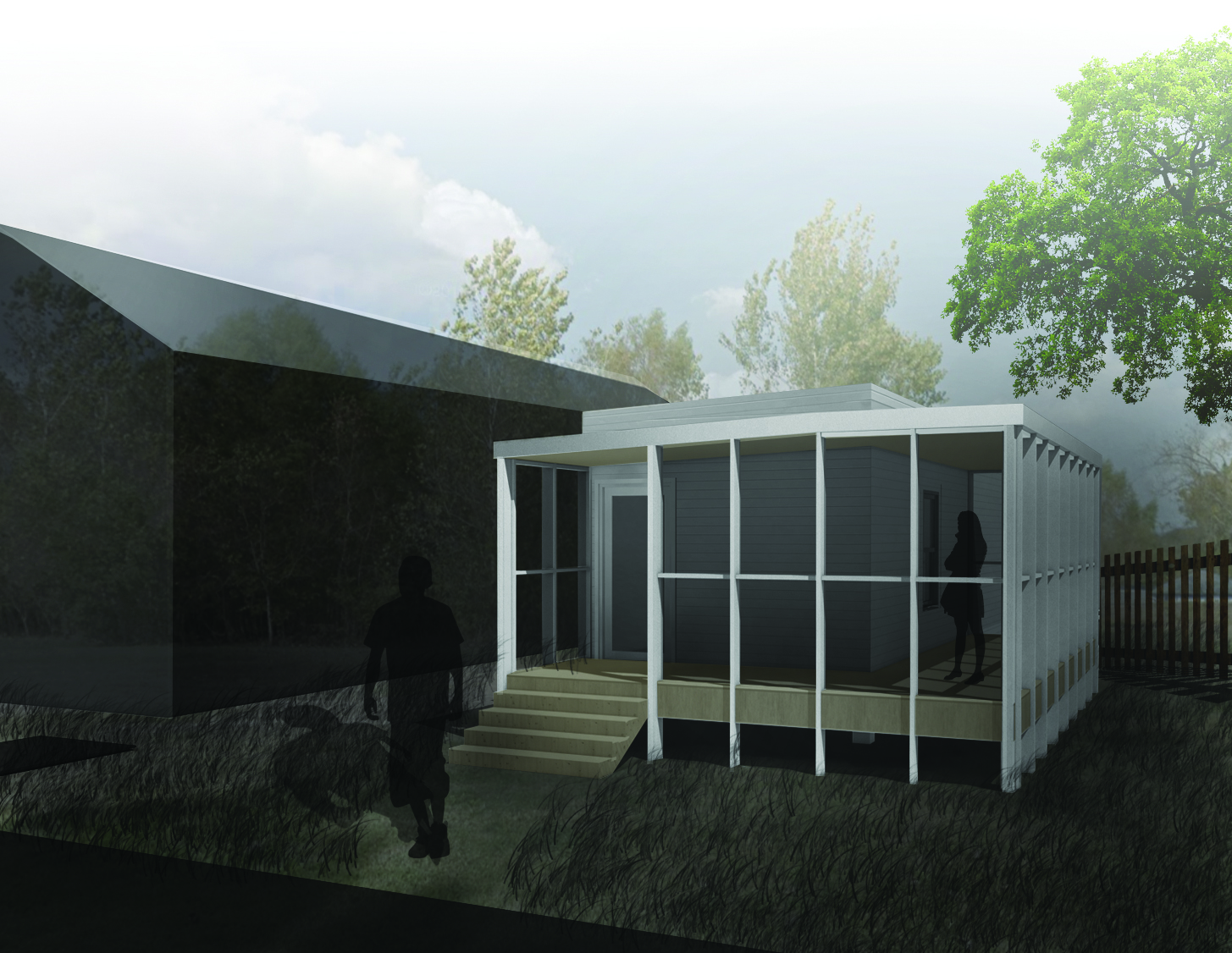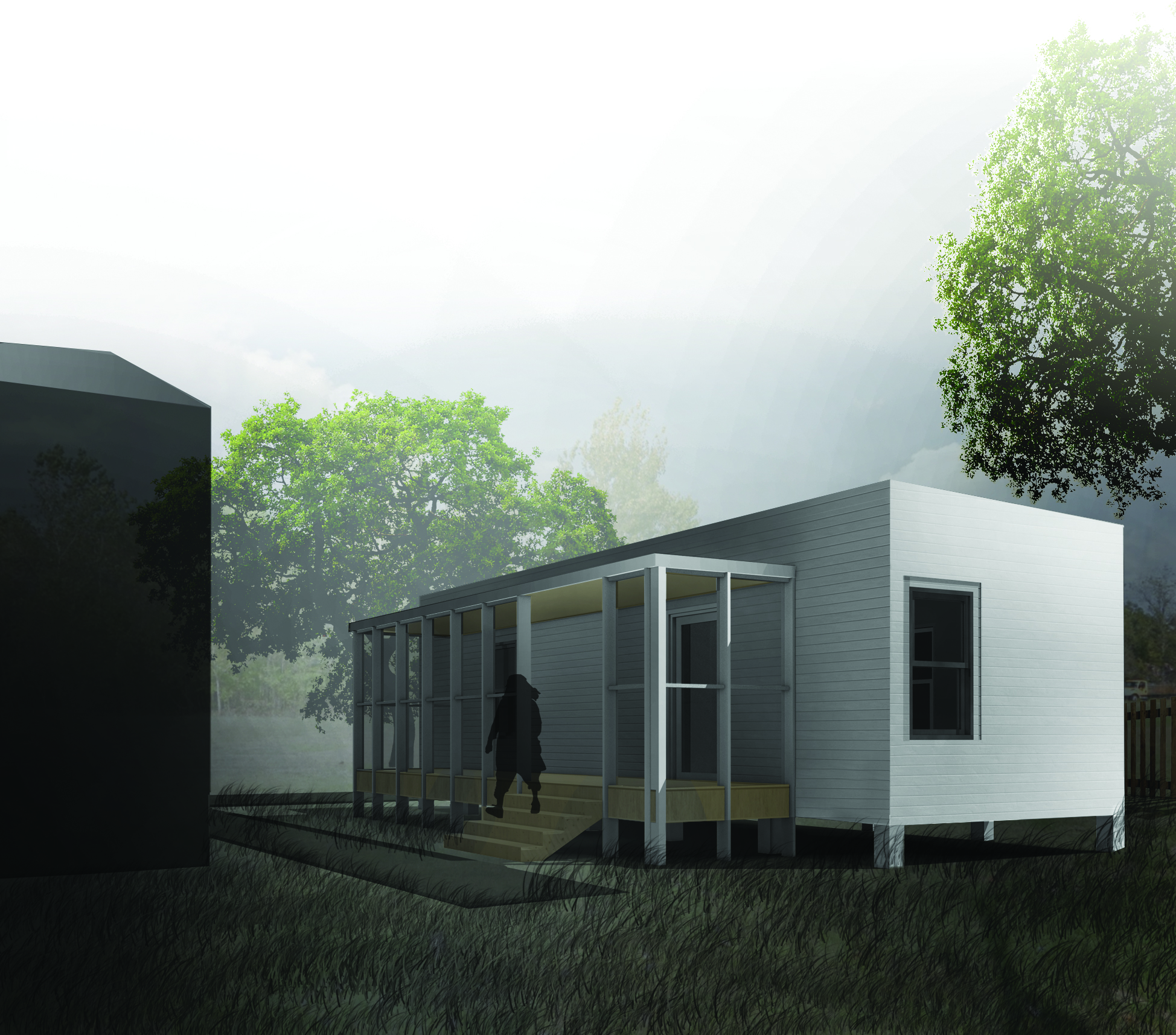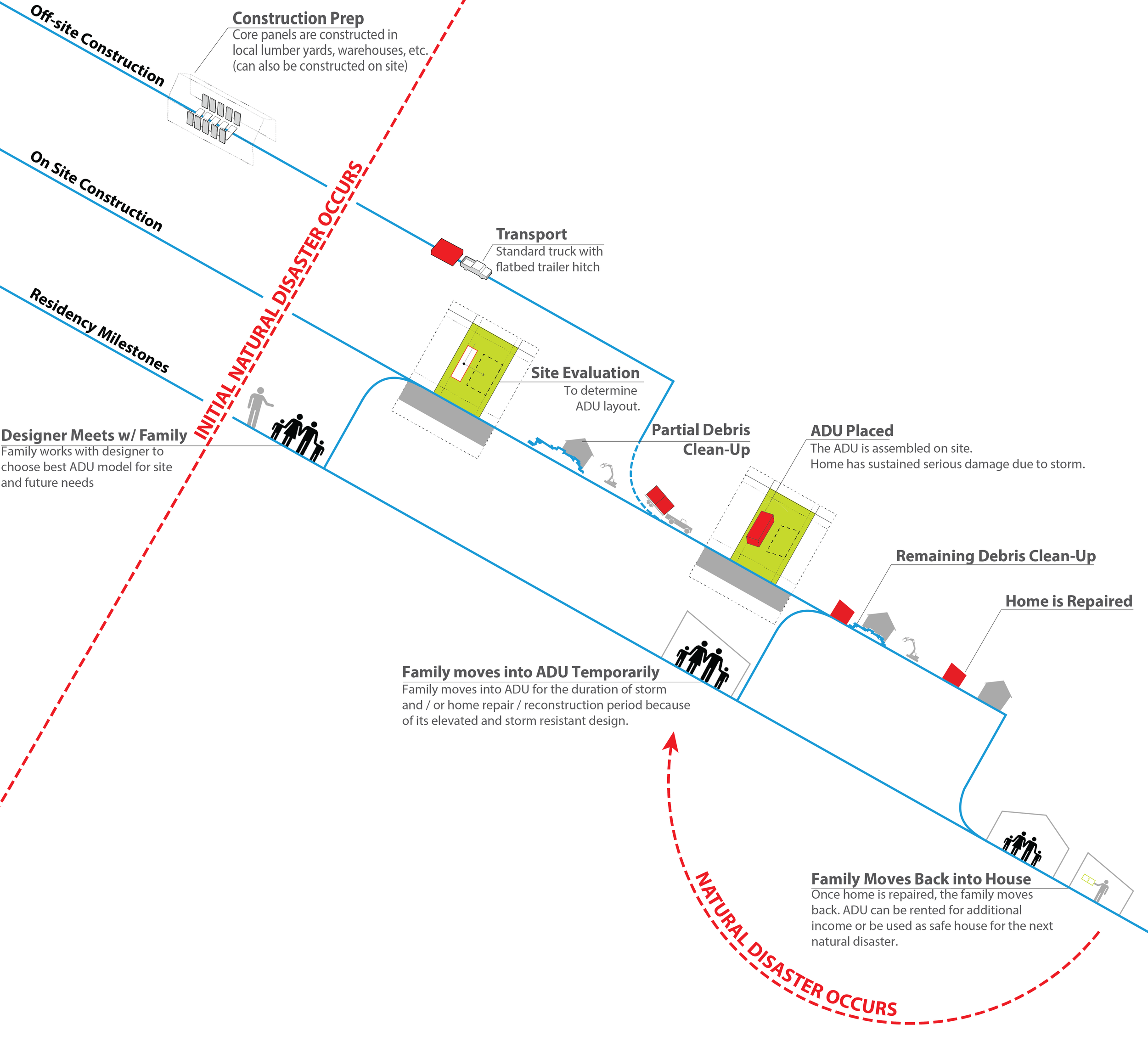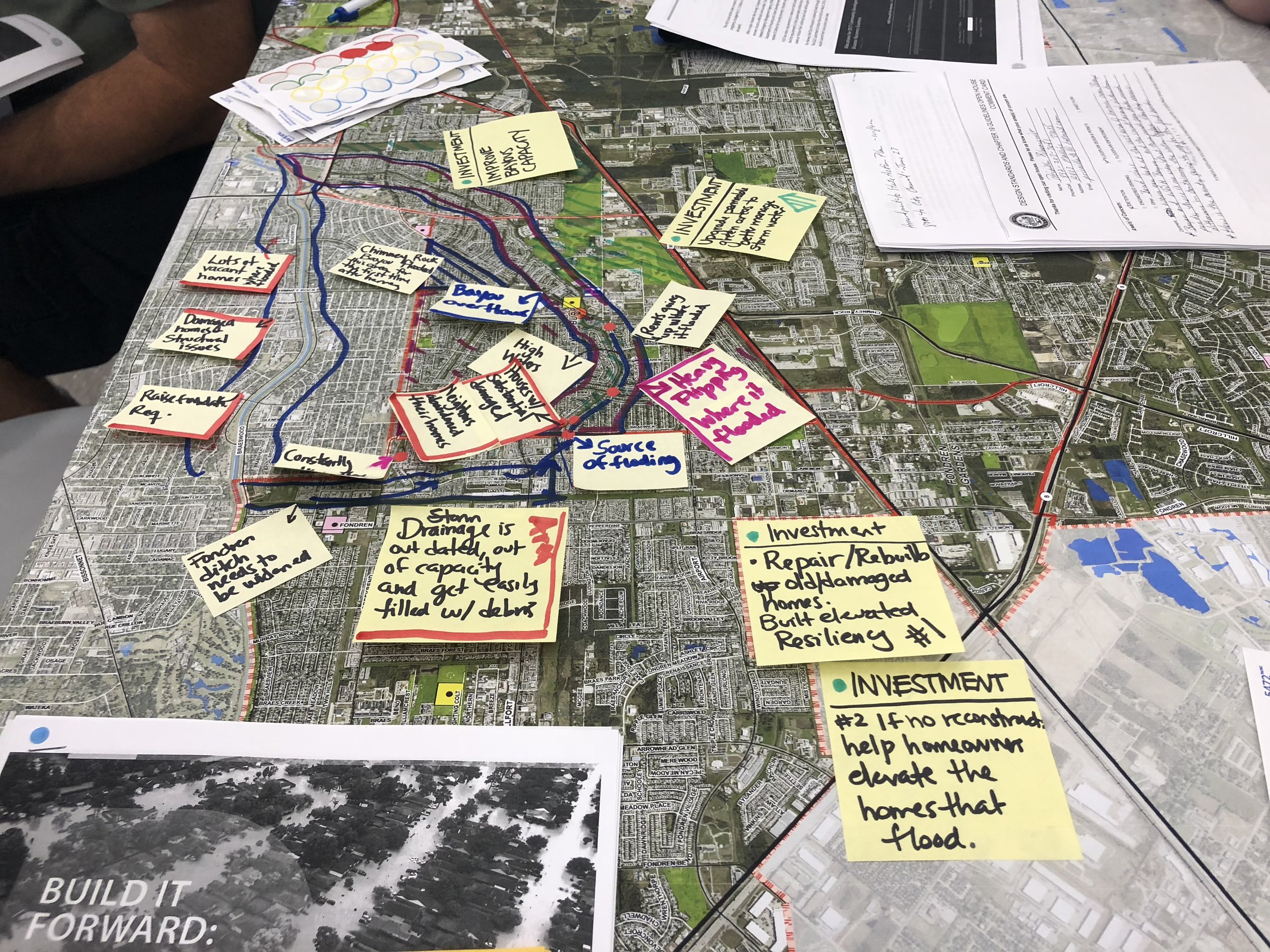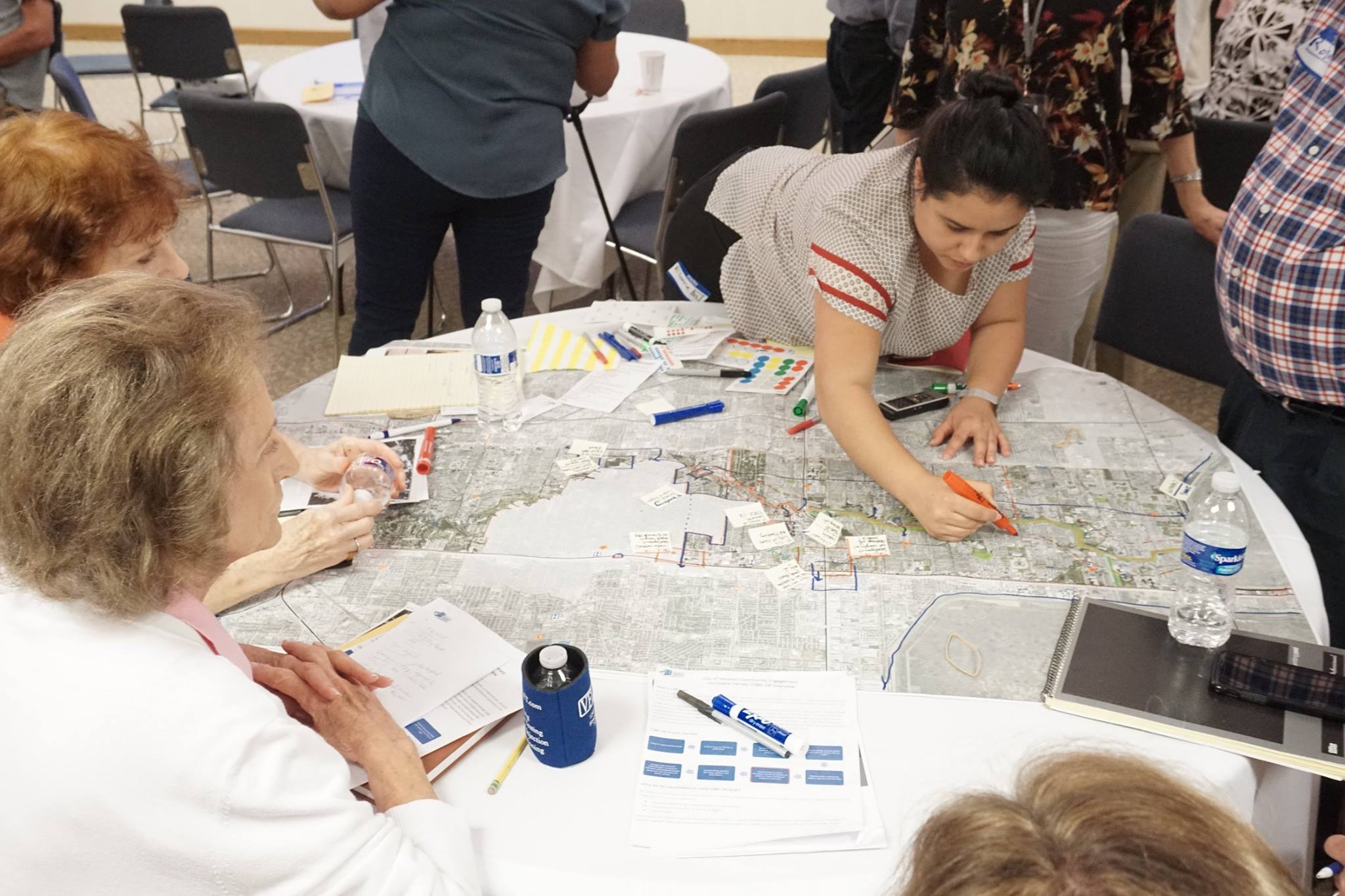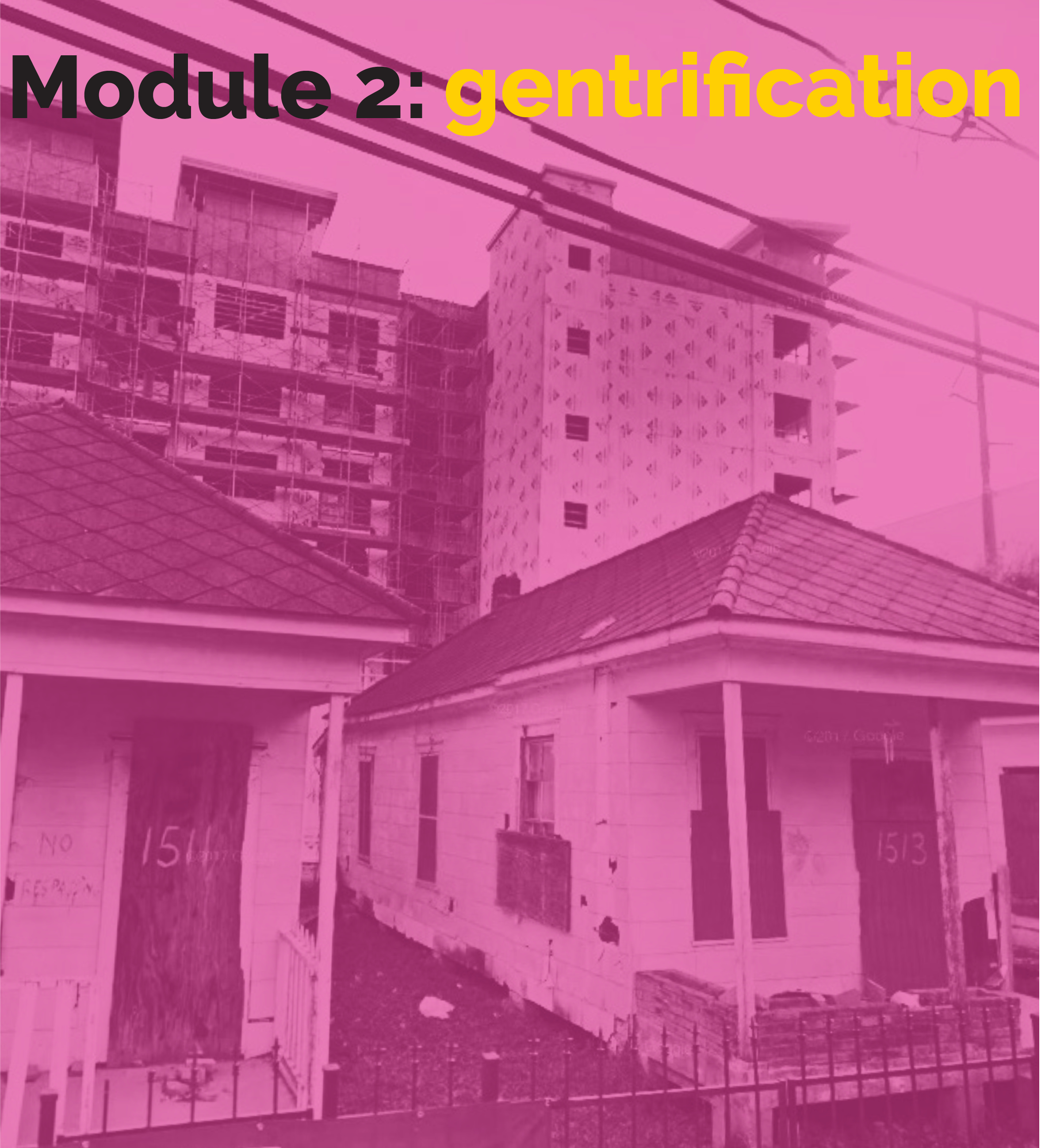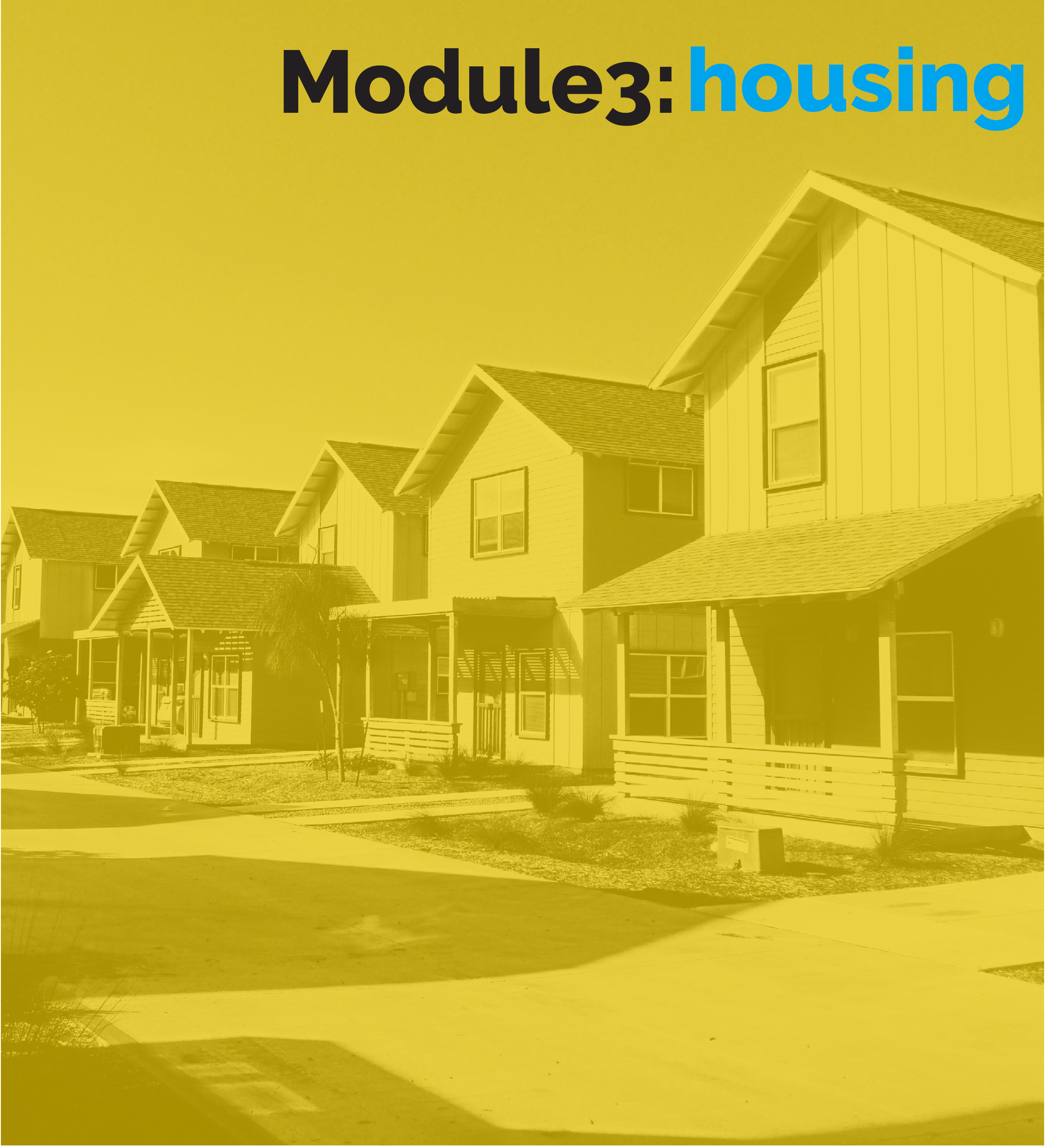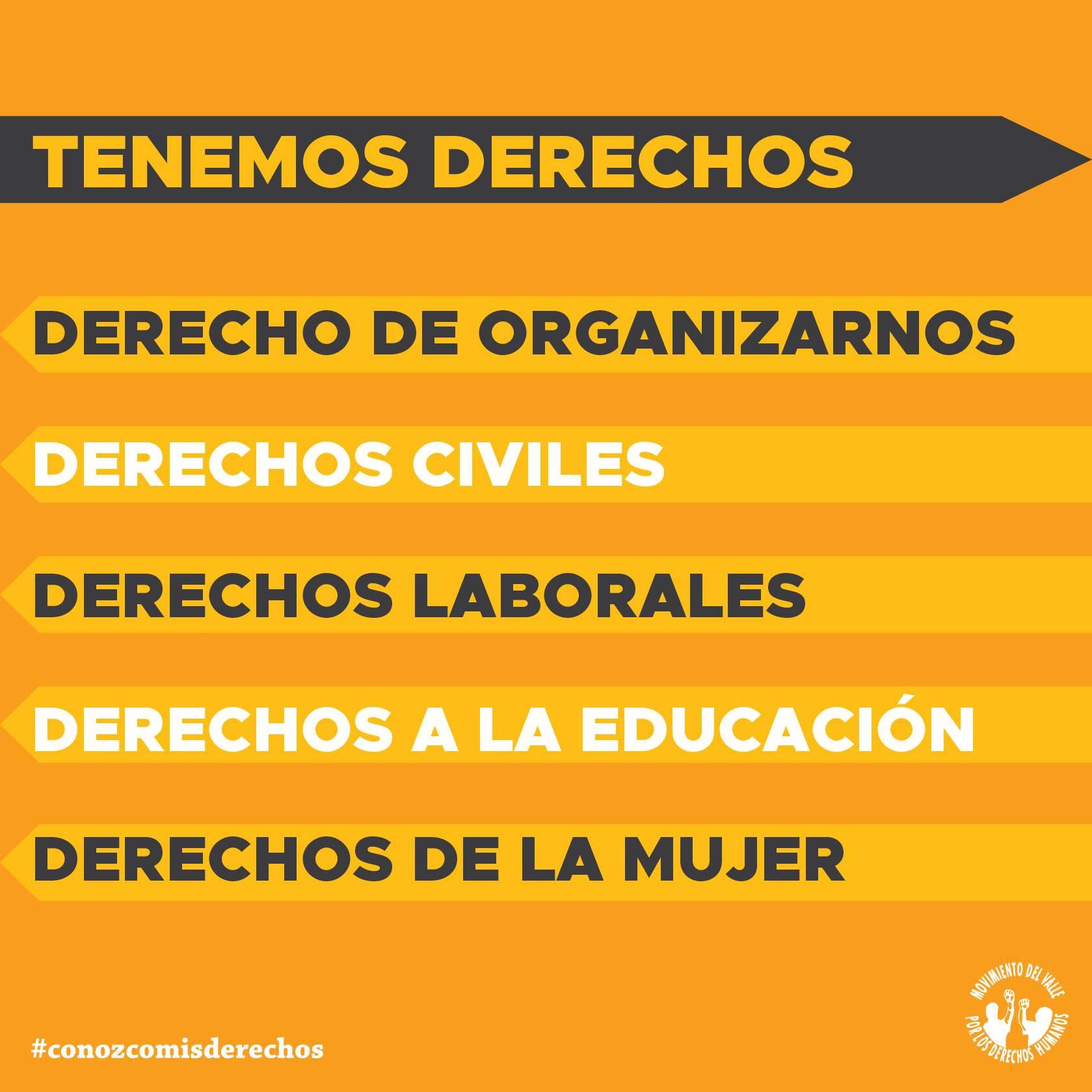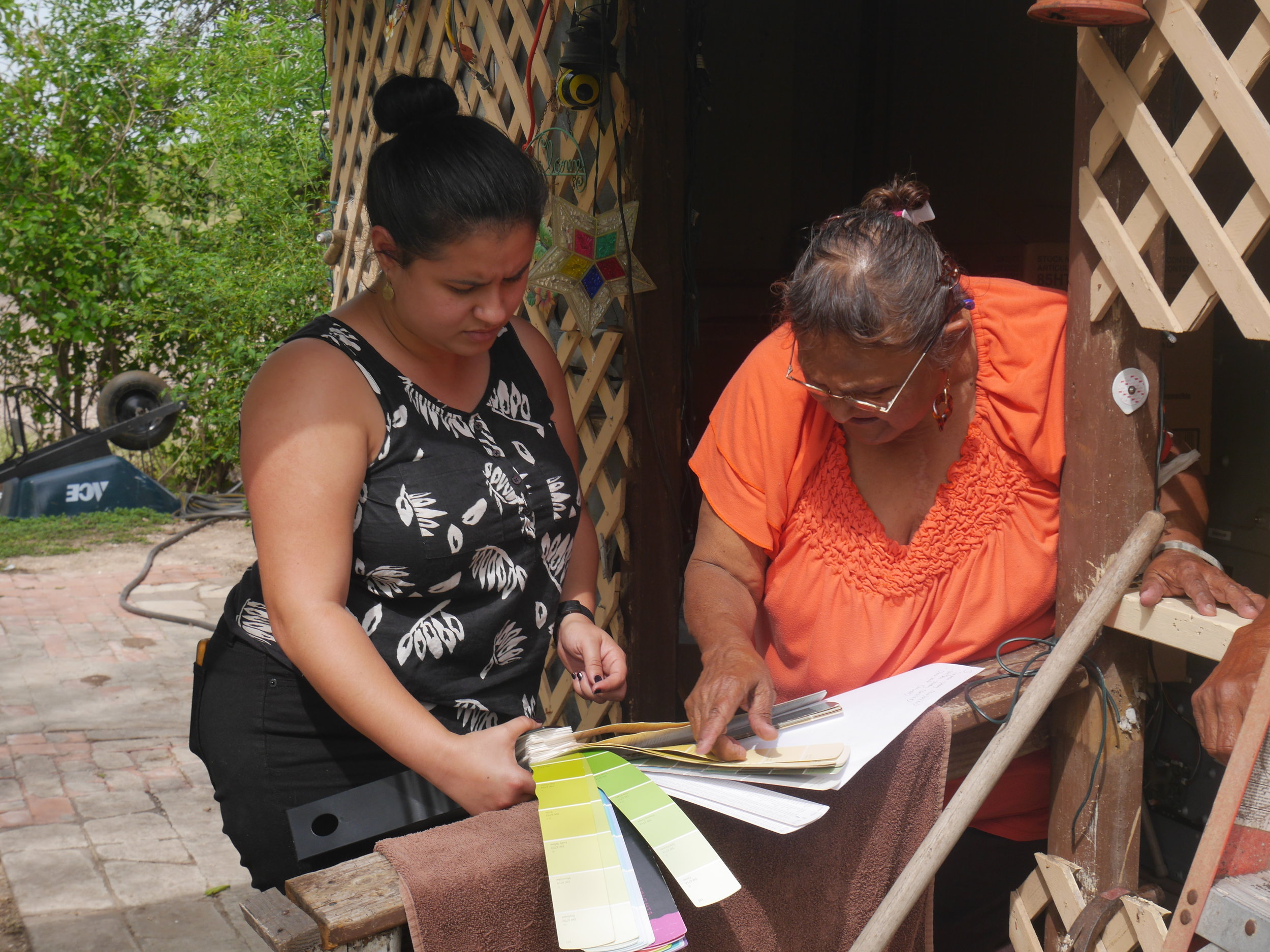Learn about our work in affordable housing in Houston, TX.
Read MoreCasitas Azucar in the Rio Grande Valley
Design Associate Luis Murillo works on Casitas Azucar in [bc]’s Brownsville office
We are excited to announce that in partnership with the Community Development Corporation of Brownsville (CDCB) we have designed a new multifamily development in the city of Santa Rosa, TX. The project consists of 50 detached single-family dwellings and also includes a community room, office, laundry room, playground area and barbecue pavilions as site amenities.
This large development, called Casitas Azucar, will significantly increase the share of affordable rental housing in Santa Rosa -- a rural community with just under 3,000 residents.
The design concept was driven by Santa Rosa’s rural environment and its historic, industrial buildings. Each unit type in the development follows a simple scheme which gave our design team the opportunity to focus on the creation and articulation of green space -- a key ingredient to healthy communities.
We increased green space per family through strategic placement of each unit and the use of modular arbor structures which were articulated to enhance the garden and patio space for each habitant. By treating every unit type uniquely to its location in the site, we were able to highlight green space and create a cohesive design that carries throughout the patio spaces. These strategies result in green spaces full of trees which are used as an extension of the family’s home, representing a continuation of each dwelling’s interior living space.
When families and individuals can spend time at home comfortably both indoors and outdoors, their quality of life stands to improve. Ultimately, our goal for Casitas Azucar is to increase the opportunity for community by addressing public and private green spaces -- to give everyone the opportunity to enjoy them how they wish. Stay tuned for more updates from this exciting development!
Community Engagement Report Release
In response to the destruction caused by Hurricane Harvey in 2017, Congress allocated $5.204 billion to the State of Texas for recovery efforts. In a departure from past recovery efforts, the City of Houston was given local control over $1.15 billion of these funds—and a short window of time in which to create the Local Action Plan, which outlines how federal funds will be used. The City of Houston’s Housing and Community Development Department (HCDD) sought to increase the role of community engagement in informing their final Local Action Plan and Disaster Recovery Programs-- its their largest Engagement effort to date. buildingcommunityWORKSHOP was pleased to collaborate with HCDD, the Community Design Resource Center (CDRC), Texas Organizing Project (TOP), Local Initiatives Support Corporation (LISC), and the UT Public Health Department to expand community engagement activities in the disaster recovery process.
Beginning in June 2018, HCDD reached out to local organizations to plan a series of meetings with different groups to understand their issues and expectations, receive recommendations about next steps, and identify potential partners. Then, local and community organizations were contacted to build partnerships for a community engagement process that would inform Houston’s Local Action Plan for the allocation of Community Development Block Grant-Disaster Relief (CDBG-DR) funds and understand the needs of communities prior and after Harvey.
Due to the rapid turnaround desired by the Mayor’s office, the Engagement process took place over the course of six weeks. [bc] and the CDRC worked together to craft a methodology, design interactive activities that would engage diverse communities, facilitate conversations, and build the department's capacity to facilitate and implement community engagement activities. [bc] and CDRC provided support to HCDD and other partner organizations by developing meeting materials, facilitator guides, and conducting facilitator training. See below the city wide meeting locations:
The findings of the engagement process were clear. Houstonians voiced their desire for increased transparency and community participation in the recovery process. Improved drainage and long-term planning for future disasters—Harvey was the third disaster to strike Houston in 5 years—were also priorities.
The Community Engagement Report detailing the methodology was initially prepared as an internal report from [bc] to the HCD Department, but given the lessons learned and reflections included in the report, the City wished to turn it into a public guide for potential use by other cities looking to enhance their Engagement efforts. It was published online in November of 2018—to learn more, we invite you to read the Report in its entirety.
Hurricane Harvey Disaster Recovery Guides
Image Credit Lafayette, TN, February 8, 2008. George Armstrong/FEMA Photo Library
Since Hurricane Harvey, we have been working alongside our partners and residents of communities affected by the storm. Building off our work to empower community members with the knowledge to drive the future of their communities through projects like the Land Use Colonia Housing Action (LUCHA) and the Disaster Recovery Leadership Development program in partnership with the Texas Organizing Project, [bc] will produce a series of graphic Disaster Recovery Guides to aid residents of Harris, Aransas, Refugio, and Nueces Counties in accessing disaster recovery resources to aid them and their families in their recovery, in conjunction with the disbursement of federal funding allocated to these four counties. This project is supported by a generous grant from the American Red Cross.
We look forward to providing further updates on our progress to engage diverse community members throughout this process and to sharing the Disaster Recovery Guides, which will be available in 5 languages, via our website.
To learn more about how you or your organization can get involved with this project, please contact us at inform@bcworkshop.org
Funding for this project provided by:
Expanding RAPIDO for Gulf Coast Recovery
We are excited to report on our progress in bringing the RAPIDO model of temporary-to-permanent housing to families affected by Hurricane Harvey.
On July 26, the first RAPIDO Core unit in Houston opened its doors to visitors and stakeholders. Also in attendance was the family who will call the Core home. On September 20, the family moved into the first RAPIDO Core in the city of Houston, TX. The family will remain there throughout construction of the Expansion, transforming the temporary Core unit into a permanent three-bedroom home. Construction on the expansion began in October.
Our efforts have also included design for RAPIDO Accessory Dwelling Units (ADUs), which can act as temporary housing during the home repair process, and then provide a source of extra income as a rental unit after reconstruction.
The design and partnership work with Covenant Community Capital and Texas Housers to realize RAPIDO units in Houston was supported by funding partnership with Enterprise Community Partners.
We are excited to announce that we are working to design and build 15 RAPIDO Core Units in Gulf Coast communities through a new grant from the Rebuild Texas Fund. Through this grant, we are also conducting research and development for mass production of RAPIDO Cores. This will serve 15 additional families affected by the storm, while also advancing progress toward the mass production of RAPIDO Cores.
New Home Development Program Breaks Ground in Acres Homes
On September 4, the City of Houston Housing and Community Development Department broke ground on 8 homes in the Acres Homes neighborhood that were designed by [bc] as part of the New Home Development Program. Drawing from the engagement done as a part of the City of Houston's Disaster Recovery Round 2, the designs were updated to improve resiliency and accessibility. [bc] staff were in attendance for the event, in addition to Mayor Sylvester Turner and representatives from HCDD.
Check out our photos from the event below!
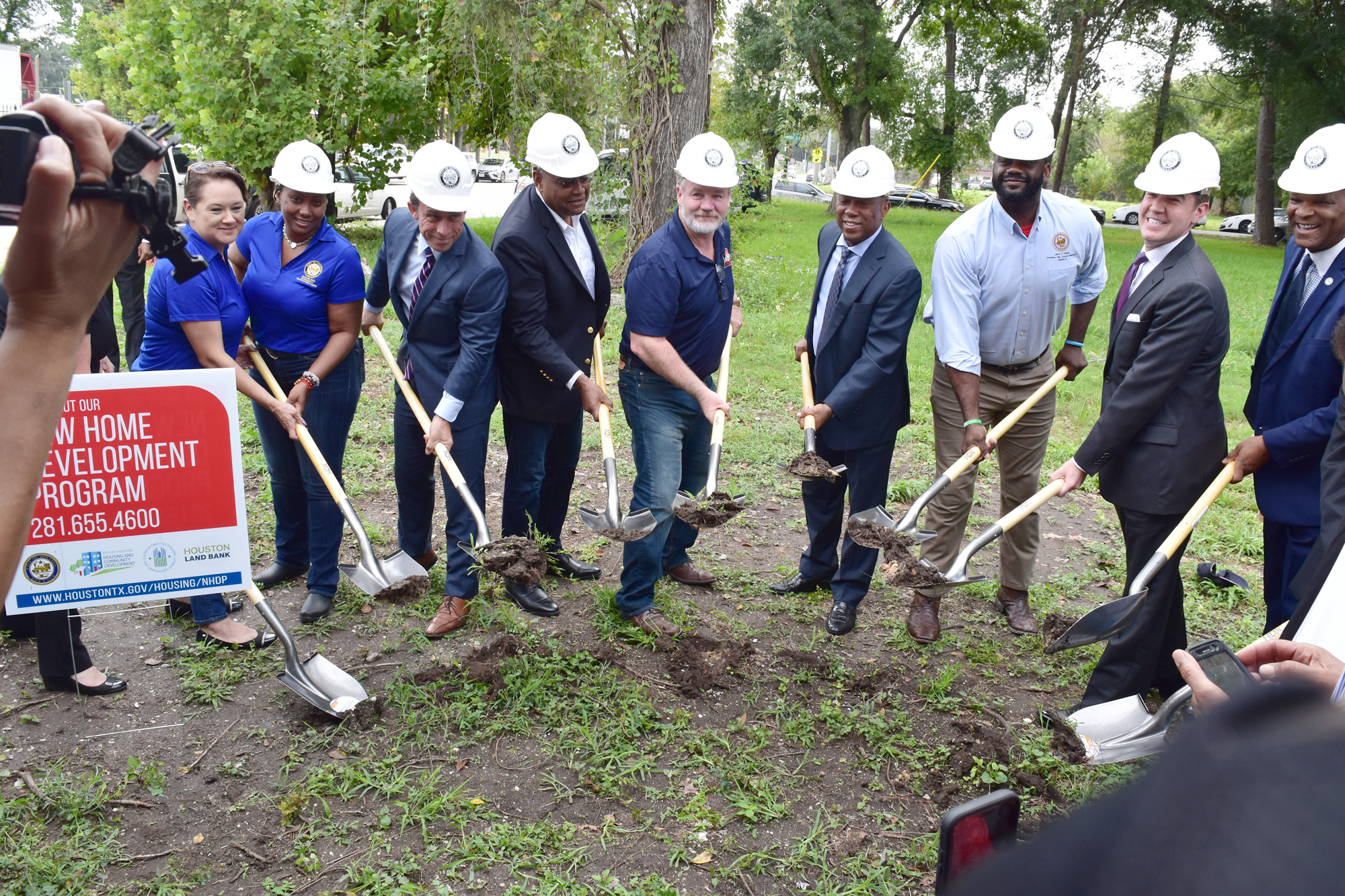
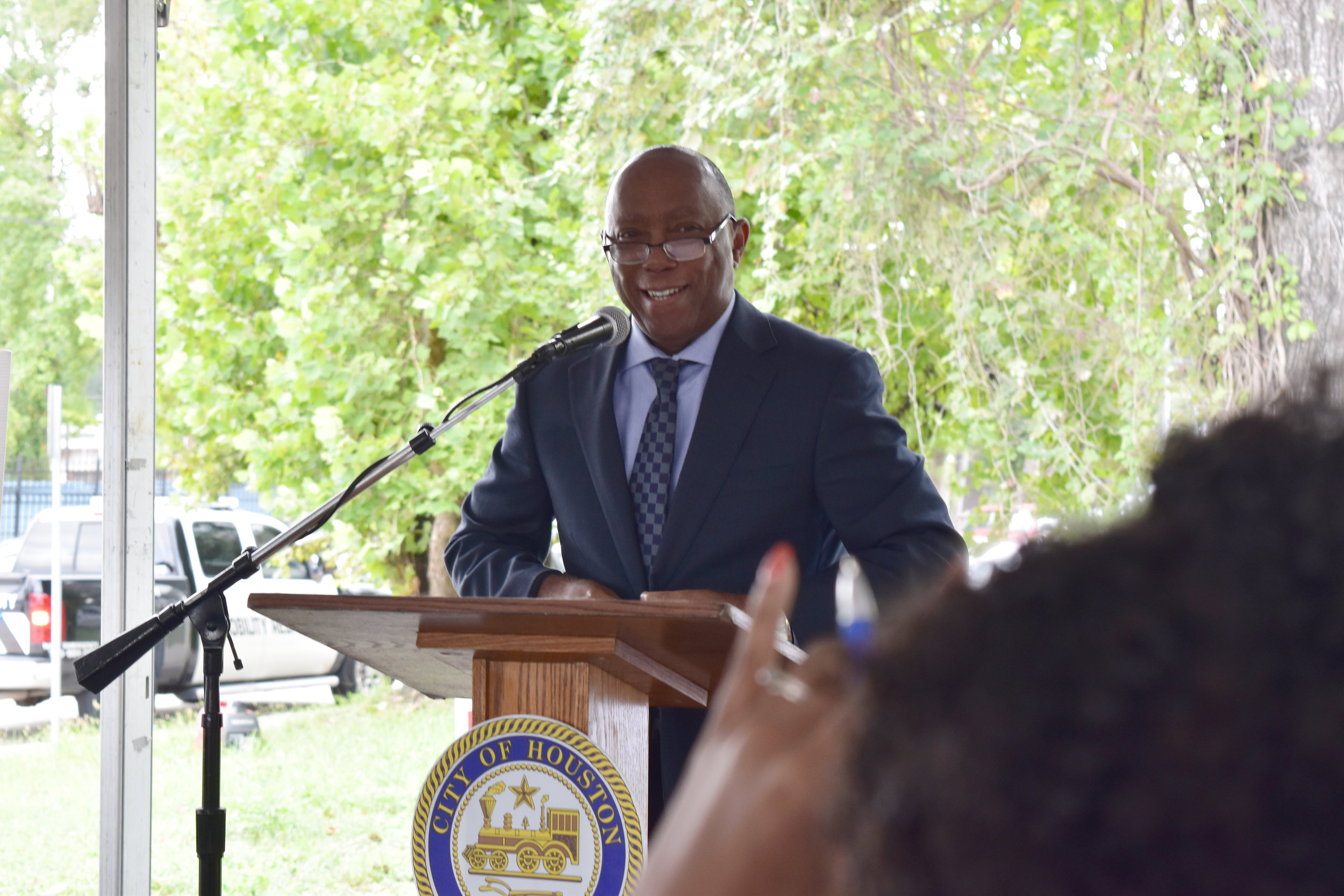
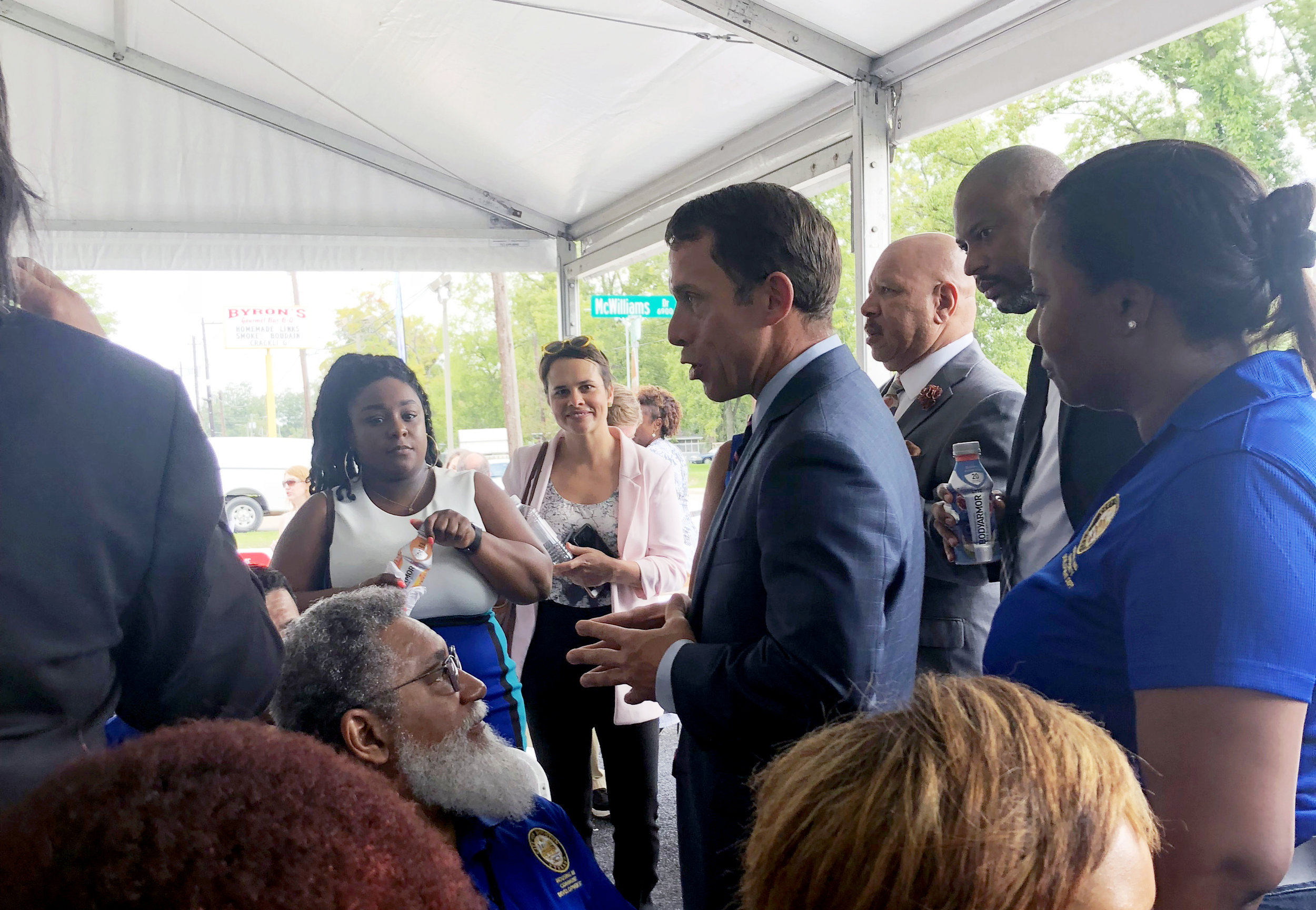
Acres Homes: New Home Development Program
Healthy, viable communities rely on strong interpersonal ties at the neighborhood level—and the preservation of affordable housing is crucial to this equation. With that in mind, we are excited to announce a partnership between buildingcommunityWORKSHOP and the City of Houston focused on creating affordable single family homes for sale using lots available from the Houston Land Bank.
Building off of our work with the Disaster Recovery Round 2 (DR2) program, [bc] is partnering with the City to design 18 new, single-family homes in the Acres Homes neighborhood. Through DR2, we had the opportunity to work with local designers in developing a Community Engagement process to set contextual and programmatic design preferences for the targeted neighborhoods and to produce informed schematic home designs, including floor plans and elevations. Taking into consideration lessons learned from our affordable housing projects and the recent changes to the floodplain ordinance in Houston, [bc] worked to adapt the designs to pier and beam foundation as well as to increase their spatial efficiencies. These home designs are based on the feedback received during the DR2 engagement process, individual design meetings with over 300 households, and our recent participation in the Acres Home neighborhood design charrette through the Complete Communities initiative.
A Unique Approach to Housing Affordability
By building on lots owned by the Houston Land Bank, this program establishes a long-term strategy for affordability in the Acres Homes neighborhood. The Houston Land Bank relies on the use of strategic relationships between developers, builders, community organizations, and other stakeholders to stimulate the revitalization of vacant, abandoned, and/or tax foreclosed properties.
Why New Home Development?
The City of Houston’s New Home Development Program concentrates on bringing infill homes built on vacant lots, adding options for healthy affordable housing that increase neighbor proximity and give more families the opportunity to become first-time homebuyers.
Building new homes increases a community’s physical assets, encouraging future development and investment. Furthermore, partnerships between home designers, builders, and community organizations engaged in community revitalization are strengthened when the affordable housing stock is developed.
Here’s the Master Plan for Acres Homes:
Stay tuned for more updates on the Acres Homes development. We look forward to sharing more with you here on our website and in our newsletter!
Rapido CORE Accessory Dwelling Unit
We have developed a series of accessory dwelling units (ADUs), exploring different outdoor design layouts that allow for adaptation and flexibility of placement in multiple lot configurations. All of our ADU designs utilize [bc]'s RAPIDO CORE, a disaster recovery housing modular unit, designed for durable and fast rehousing post disaster. Check out more information about this initiative and the details for each ADU design option at [bc]'s People's Design Library.
There are many reasons a property owner would want to invest in a RAPIDO ADU: disaster preparedness, temporary housing during repairs or reconstruction, increase affordable units in the city and provide extra income to homeowners.
These structures can be built quickly using standard materials and construction methods and are designed on raised platforms in order to avoid damage from flooding. A RAPIDO ADU can also be used as a safe house during a storm, especially if your home sustains serious damage. Because RAPIDO COREs can be built quickly, the ADU can act as temporary housing and allow homeowners whose houses are in need of repairs to remain on their property while their home is repaired or rebuilt. ADUs are also often rented out to individuals, and this extra structure can give the homeowner an extra source of income once they have returned to their repaired home.
Hurricane Harvey Disaster Recovery Community Engagement
As Houston moves from relief to long term recovery, the City is preparing a plan for the $1.2 billion that will be received from the U.S. Department of Housing and Urban Development (HUD) in the fall. In order for this money to be spent in the most useful and effective way, the Housing and Community Development Department (HCDD) partnered with local community organizations, super neighborhood councils, City Council districts, and civic clubs to organize 17 public meetings to assess housing and recovery needs and priorities in Houston. [bc] and the Community Design Resource Center (CDRC) designed interactive work sessions to better engage diverse communities in Houston and build the department's capacity to facilitate and implement community engagement activities as part of their programs. A summary of the findings from these meetings as well as the Houston local action plan were publicly released by the HCDD on June 26, 2018.
These community meetings took place in various neighborhoods and engaged over 800 people. At these meetings, surveys were collected in order to track people’s personal circumstances and needs since Harvey, but the majority of the discussions were aimed at talking about their neighborhoods as a whole. This neighborhood-level feedback was documented through a round-robin discussion format and mapping exercises. Residents also had the opportunity to prioritize housing and infrastructure programs for which the CDBG-DR funds could be used.
We look forward to continuing to work with the City of Houston to engage diverse communities!
Neighborhood Needs Assessment Meeting hosted by TOP and Houston Housing and Community Development Department
Disaster Recovery Leadership Development
Houston residents will have a lasting impact in shaping the future of region as the City asks the people how they wish to see federal funds allocated for Harvey recovery. We have worked with the Texas Organizing Project (TOP) to create resources for individuals to learn about specific issues including flooding, the disaster recovery process, housing and gentrification. We hope that these modules will help people provide informed feedback at community meetings, support community organizing efforts, and empower them to have engaged conversations with local officials and experts. These educational resources will help locals understand the details regarding these issues and the systems in which these issues exist. We have been meeting with residents, TOP, and the City to pinpoint neighborhoods' specific struggles before and after Harvey.
Summaries of each module can be found below. Click the image to access the content of each module through [bc]'s People's Design Library.
Flooding:
This module explores the causes of flooding, how rain water is managed at different scales, and what residents of Houston and Harris County should be aware of in regards to flooding post-Harvey.
Housing:
This module investigates the factors that shape housing affordability, who is responsible, and ways you can advocate for more choices in Houston’s housing market.
Gentrification:
This module explores the impacts of gentrification, anti-displacement strategies, and responsibilities of preserving housing affordability and community identity in Houston.
Disaster Recovery:
This module explores the stages of recovery, types of recovery housing, and who is involved in the disaster response and recovery process.
RAPIDO in Houston
With the support of a funding partnership with Enterprise Community Partners, Inc., [bc] is working to bring the RAPIDO model to Houston, working with families affected by Hurricane Harvey in collaboration with Texas Low Income Housing Information Service and Covenant Community Capital.
We've worked to adapt RAPIDO's temporary-to-permanent housing model for this new geography and have designed a temporary-to-permanent unit for a family. RAPIDO’s housing model deploys a temporary CORE unit to family’s property weeks after a disaster, which can be expanded into a permanent home through a system of semi-custom designed additions. The purpose of the RAPIDO CORE is to bridge the gap between relief and recovery housing and provide a pathway to meet long-term family needs and preferences.
Our first RAPIDO prototype in Houston will provide the process and the means for a Houston family to become homeowners and allow us to pilot RAPIDO in Houston.
We're also working to design and build an Accessory Dwelling Unit prototype (ADU), which will pilot additional possibilities for post-disaster housing and pre-disaster planning. After a disaster, RAPIDO's ADU allows homeowners whose houses are in need of repairs to remain on their property while the repairs are made. After the homeowner moves back into their primary home, the ADU can be rented out as affordable housing, providing an extra income. The RAPIDO ADU unit can also play a role pre-disaster by providing a safe space on a homeowner's property.
Check out photos below!
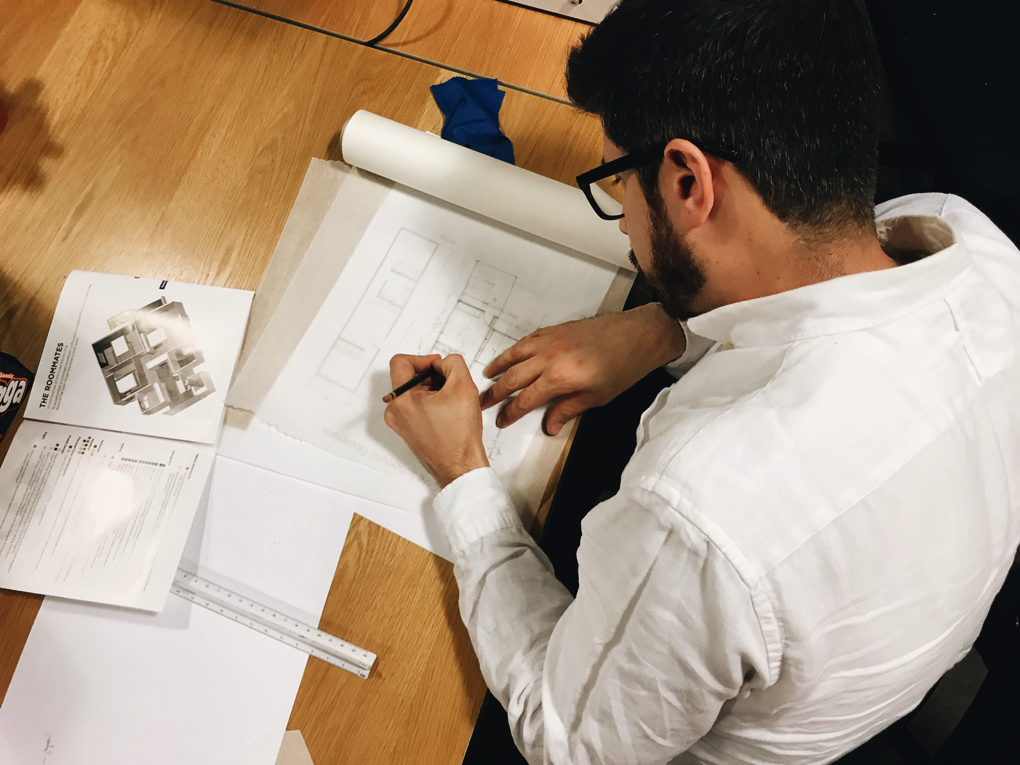
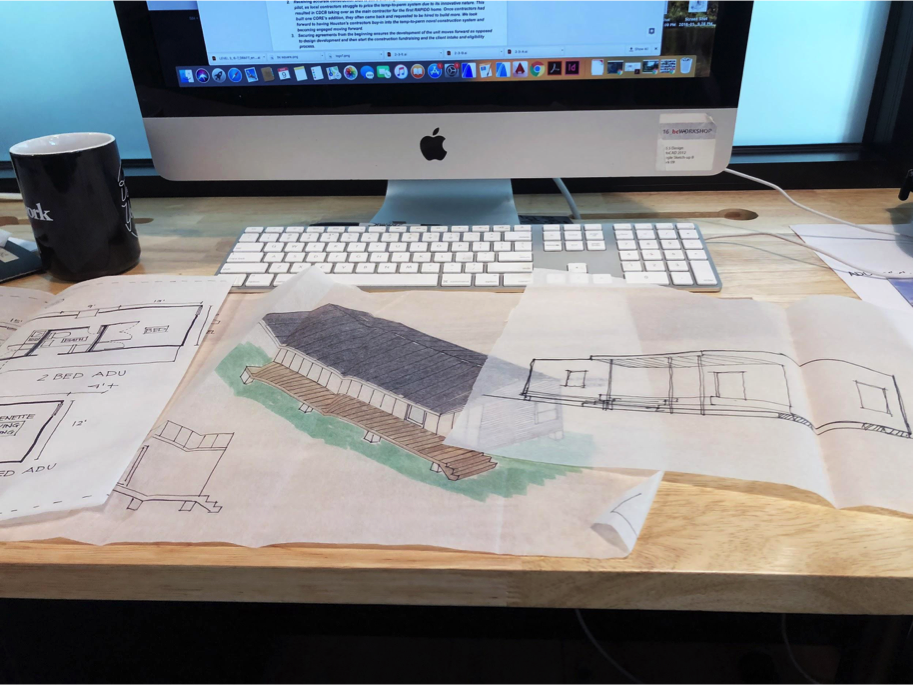
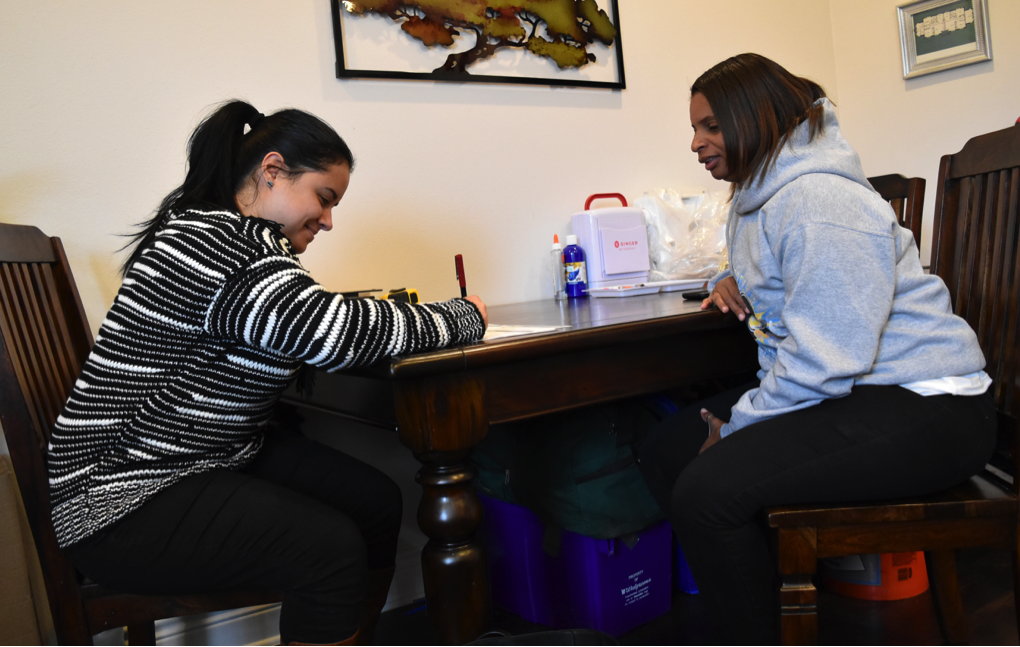
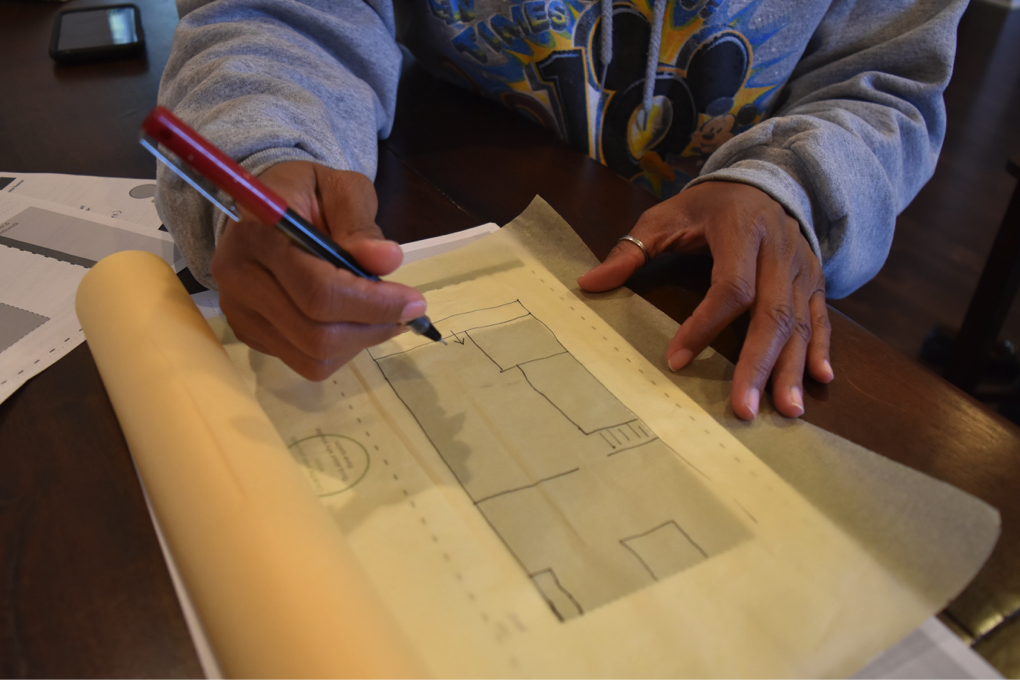
Community Engagement Recap

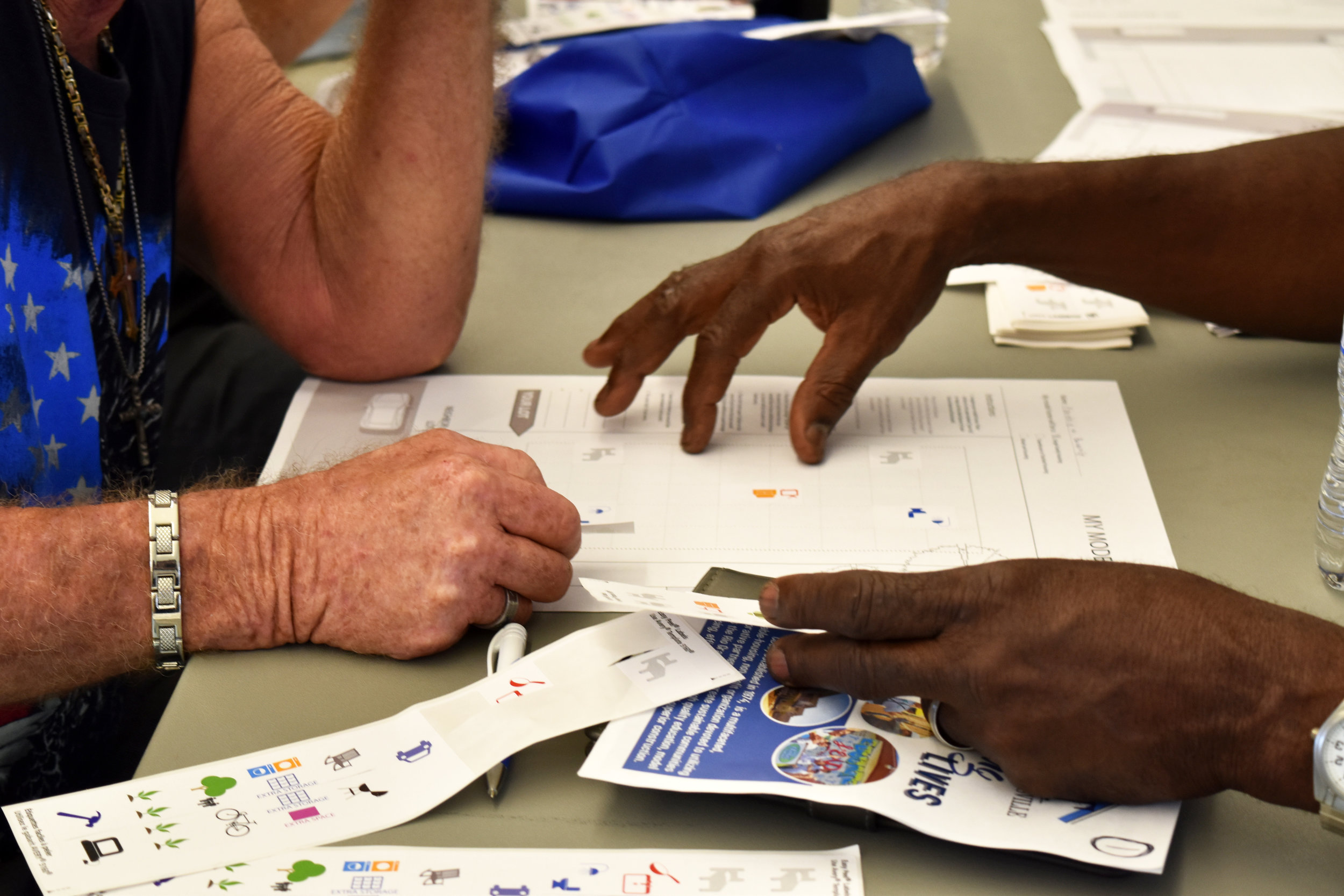
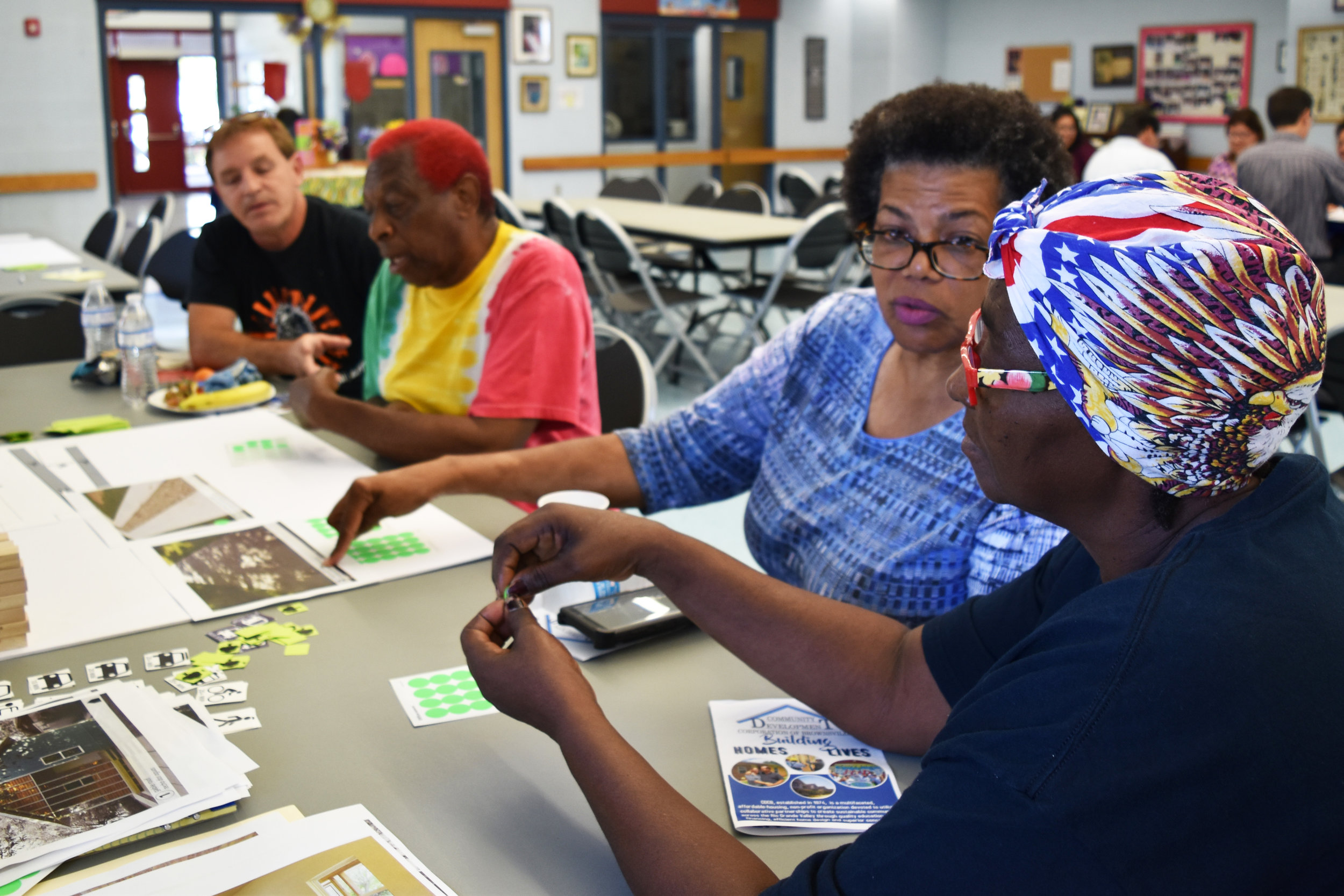
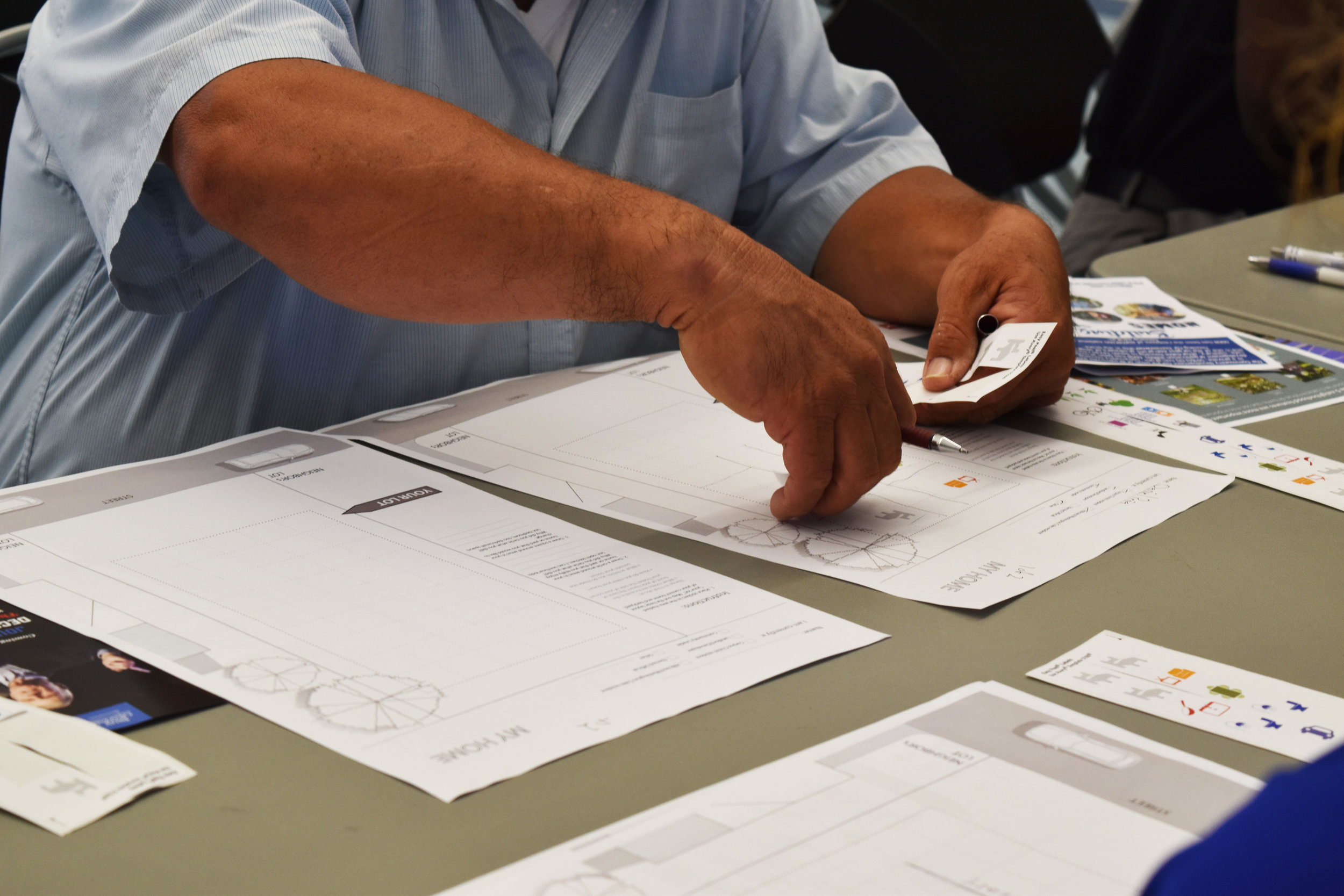
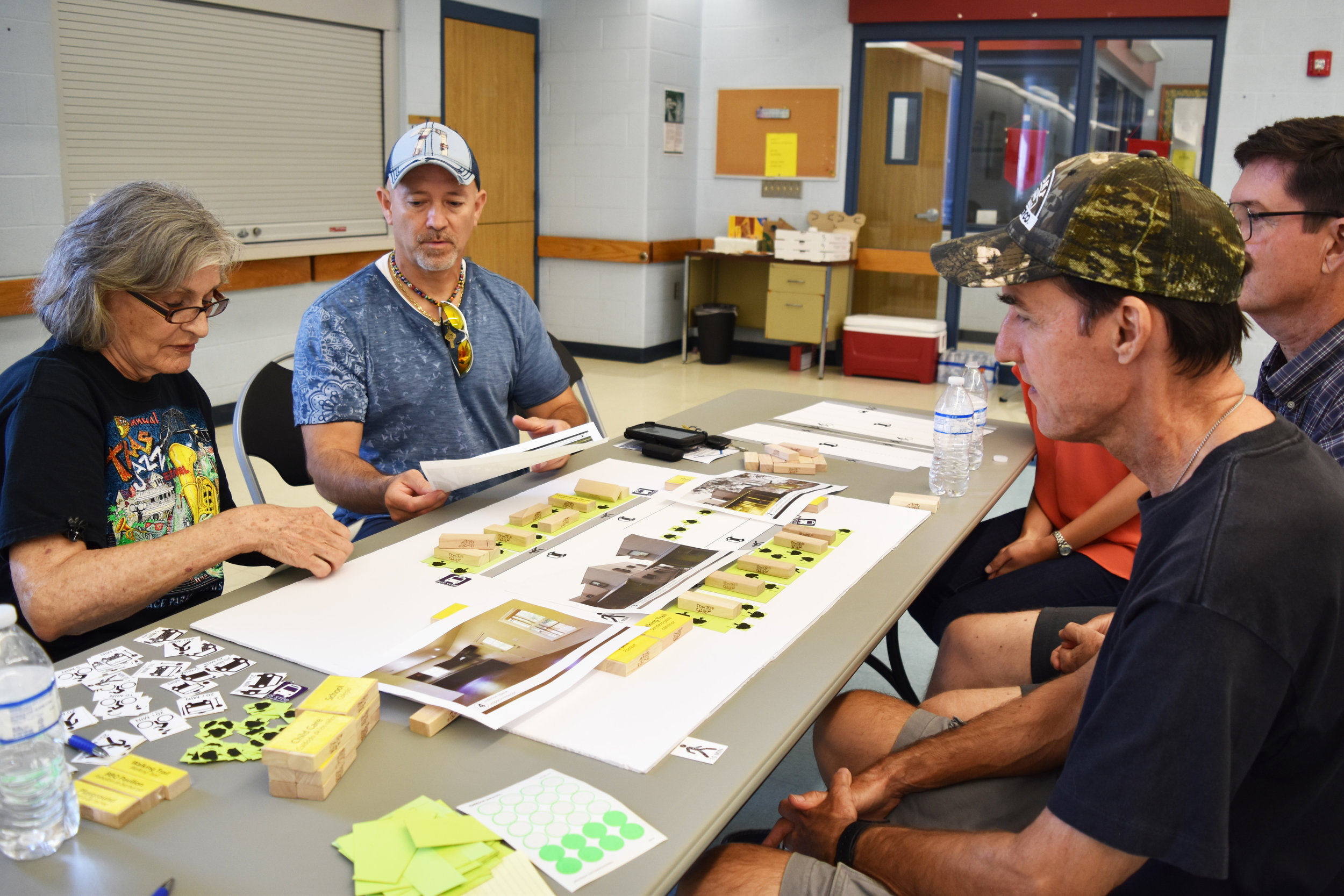
Community Meeting
[bc] partnered with the Community Development Corporation of Brownsville to host the first community engagement meeting with residents from Corpus Christi on September 18th. This process was prompted after the Port of Corpus Christi announced a voluntary relocation program for the neighborhoods of Hillcrest and Washington-Coles.The purpose of the meeting was to introduce the two organizations to Corpus Christi, which was looking for affordable housing options. We also wanted to learn what housing preferences the local residents wished to live in.
With this is mind, [bc] put together a few activities to learn more about the housing preferences. The residents were asked to fill out a survey that included questions framed around their desired neighborhood characteristics, the preferred housing attributes, and the nearby amenities they wished to live close to.
After a night of conversations and participating, the meeting finished with responses and answers that would be used to further the design process. The next step was to create a community workshop that focused more specifically on the individual housing and locational preferences for each resident.
Community Workshop
On September 30th, [bc] again paired with Community Development Corporation of Brownsville to host an interactive community workshop session. This session was focused around the individual housing and locational preferences of each residents. This was done by separating the residents into two groups; one that wanted to move together as a community and the other that was interested in finding land that fit their family's needs.
The residents that wished to move together went through an activity to construct their ideal neighborhood. The residents used blocks and paper to compose an example section of their future neighborhood. The elements were based off of the original nearby elements chosen the meeting before. This activity allowed the residents to understand how the design of a neighborhood begins.
The residents that wished to move as individuals participated in a sticker activity that had them layout their existing home and compare it to what they would like to see in their new home. Deciding among room arrangements and architectural elements allowed each participate to have a say in how their house would get designed.
The next step in the design process is to work with our partners at CDCB to address the locational preferences and begin schematic design.
Focus Group
On November 18th, the residents of Corpus Christi came to a focus group geared toward progressing residents in the design process. The main objective of the meeting was to understand the locational preferences of Corpus Christi. [bc] and CDCB put together different areas of the city in order to best understand where the residents wanted to move.
The residents and [bc] employees had conversations about various housing locations within Corpus Christi. Afterwards, a general consensus is going to allow [bc] and CDCB to find land within the city to begin the construction design process with the focus group residents.
Currently, individual design meetings are being scheduled as equitable land becomes available.
Understanding Housing Needs and Preferences in Corpus Christi
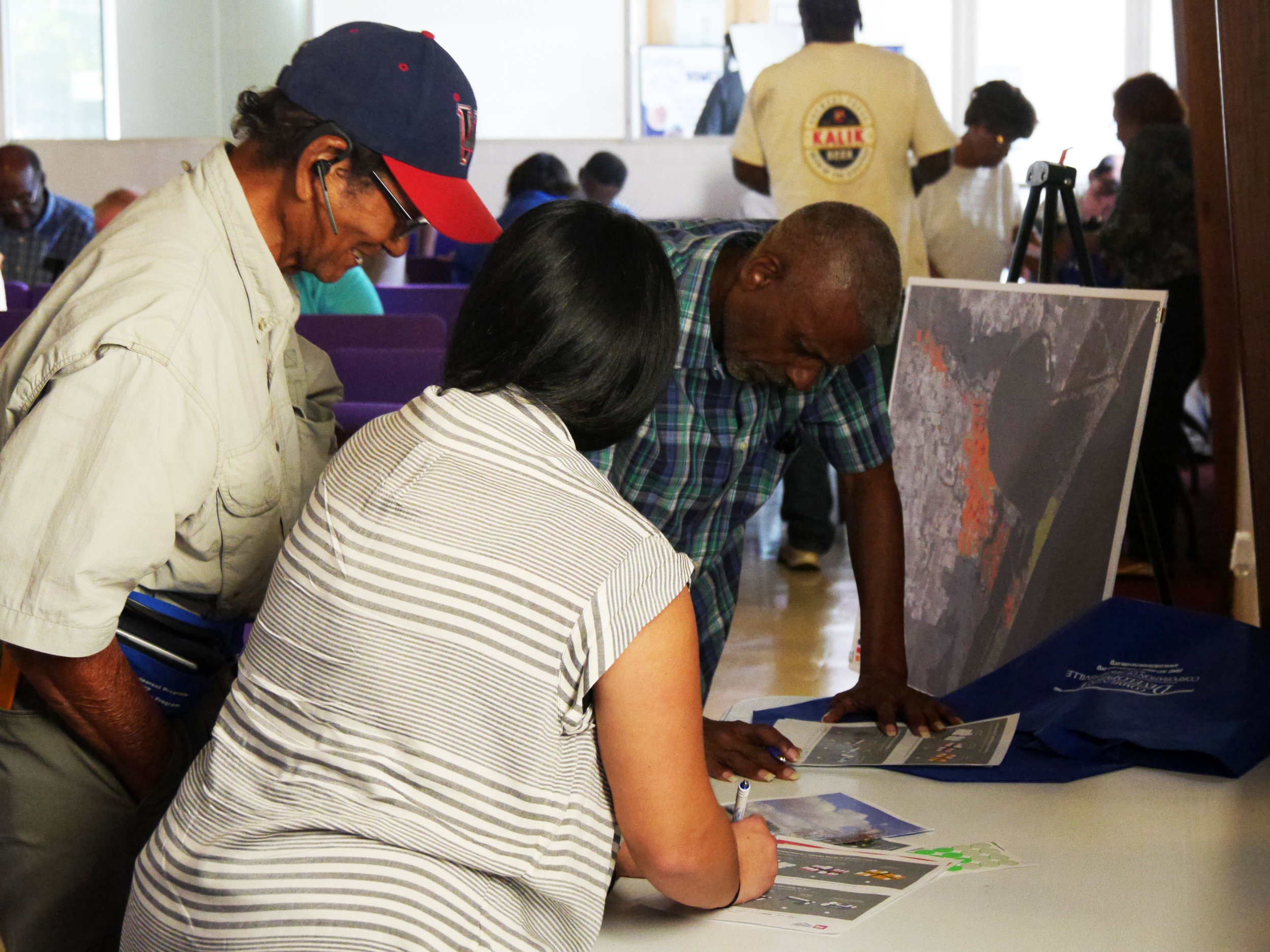
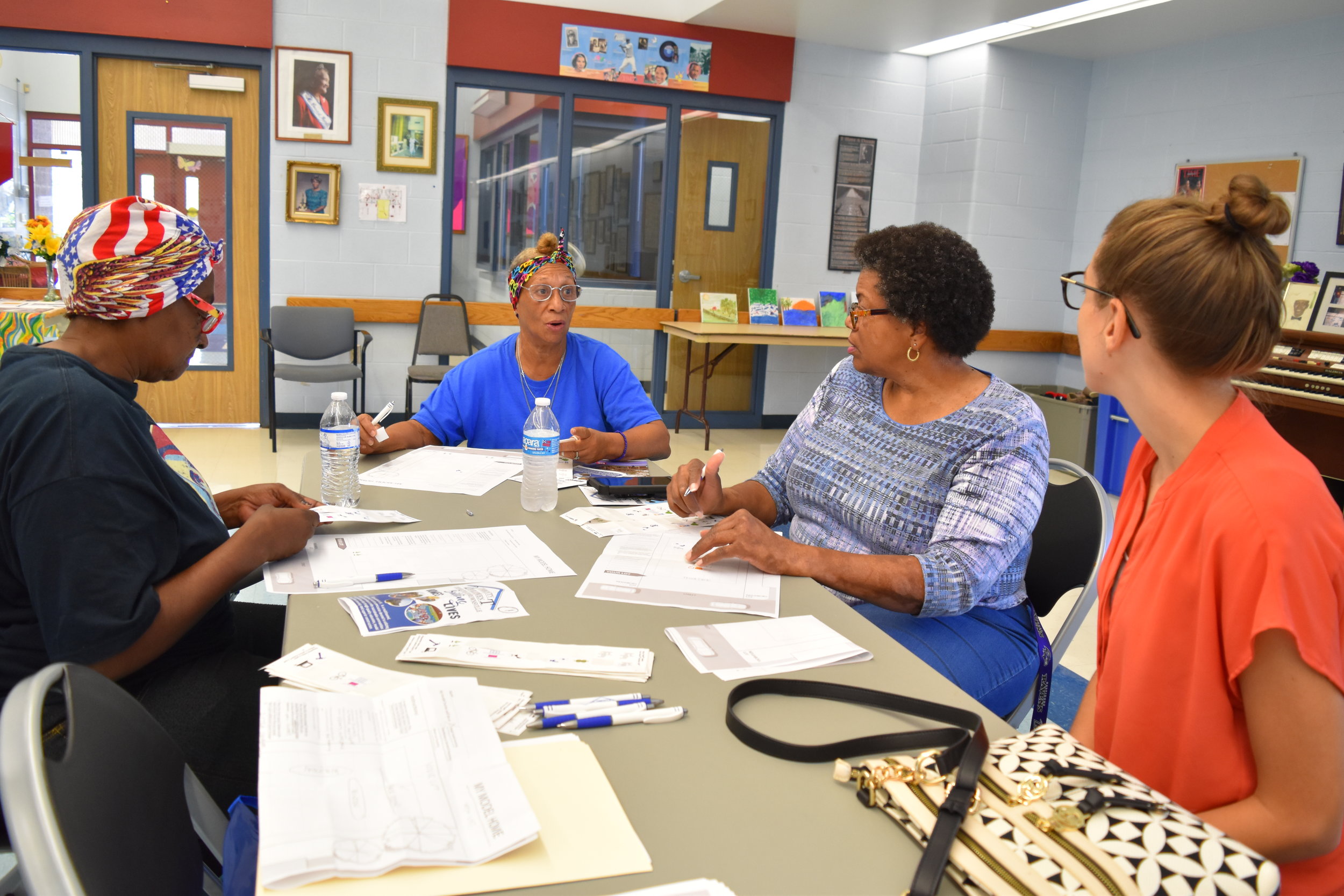

Corpus is a new geography for us and we recognize that we understand the social, economic, and environmental issues facing a community before beginning work. The Hillcrest and Washington Coles community had already started a relocation process that started 2 years ago. Even though the program is voluntary the residents are facing a difficult decision between staying in an environmentally hazardous area, which will be affected by the relocation of a major infrastructure project or participating and having limited choice. During our discovery phase we focused our efforts in understanding the state of housing and the different actors in the housing community.
Last month, [bc] in partnership with CDCB started engaging Corpus Christi’s residents and stakeholders through [2] events: a community meeting that served as an informing and listening session; and a Housing Workshop designed to understand current housing conditions and desires from and individual and neighborhood perspective.
PDII 2017 Projects Completed!
Learn more about the Public Design Impact Initiative!
For the two projects selected this year, filmmaker Tony Pena filmed and produced two videos for Equal Voice Network, and graphic designer Nayelli Bautista designed essential handouts and informational materials for Movimiento del Valle por los Derechos Humanos.
These projects will both assist each organization with their outreach to residents of the Rio Grande Valley, ensuring they are informed about their rights as citizens or non-citizens. It also positions each organization as a resource for their communities. We hope these design works enable both groups to reach a wider and more diverse audience.
You can see the products of each project by following our recipient organizations: Equal Voice Network and Movimiento del Valle por los Derechos Humanos on their social media.
Movimiento del Valle por los Derechos Humanos now has brochures, posters, flyers, and business cards to distribute that inform Rio Grande Valley residents of their rights and provides resources in case these rights are violated.
Equal Voice Network now has two short videos regarding the impacts of legislation like SB4 and how we can all work together to advocate for the interests of individuals and families in the Rio Grande Valley.
These Public Design Impact Initiative projects were made possible by support from the Ford Foundation. Thank you to our designers, nonprofit partners and supporters!
Casitas Los Olmos is finished!
Learn more about our Making work!
Casitas Los Olmos, completed in October 2017, is a neighborhood of 80 single family rental units and six community amenity structures where families can thrive and have a sense of ownership of where they live. Porches create spaces to enjoy the outdoors, shaded windows help keep the hot sun out, and energy and water efficient construction help keep utility bills low. Each home has parking spaces immediately adjacent to the front door.
The 8.72 acre site incorporates low impact development (LID) strategies such as bioswales, partially permeable driveways, and native landscaping to filter and absorb as much stormwater on site as possible. Community amenity structures (including leasing offices, a learning center, a community space with a prep kitchen, a BBQ pavilion, mail kiosk, laundry and playground) define the larger public green areas. Steel roofs encompass the amenity structures and provide large shaded areas for comfortable gathering and play areas. The shade structures take a cue from Raymondville’s agricultural history.
From the project's inception, the design team challenged itself to create a place that engages residents and engenders a sense of community. The neighborhood was developed via a community engaged design process, resulting in a collection of sequential green spaces, varying in scale from pocket neighborhood areas to community greens. The integration of pedestrian paths allow residents to move throughout these spaces of gathering and play.
Expanding Choice in Affordable Housing
Learn more about sustainABLEhouse, and our sAh RGV work.
sustainABLEhouse utilizes design as a tool to address issues of equity within the Lower Rio Grande Valley by providing affordable single-family housing that is durable, efficient, contextually appropriate, and community & resident informed.
The sustainABLEhouse design process is broken down into simple steps so that a family can confidently make decisions about their home. The design of each home begins with a family filling out a Design Starts Here homework booklet. The simple questions in the homework helps a family think about the factors that will go into the design of their home. [bc] staff meet the family at their property and together measure the property to fully understand how to work with existing infrastructure, trees, and other important factors. This interactive early step helps to build trust between [bc] and the family, an important part of the sustainABLEhouse process.
Since beginning sustainABLEhouse in the Lower Rio Grande Valley in late 2012, [bc] has worked with Community Development Corporation of Brownsville to build homes with 63 families. Each of the families designed their home via a custom design process, or via a customizable catalog process. You can watch a short film documenting our process here!
sustainABLEhouse has fit into four different funding programs and sources in the LRGV. Three of these programs are administered by the Texas Department of Housing and Community Affairs (TDHCA) - Colonia Self Help Center, HOME Homeowner Rehabilitation Assistance, HOME Persons With Disability, and the City of Brownsville’s HOME Homeowner Rehabilitation Assistance program.
sustainABLEhouse acts on the belief that choice empowers, and a home designed by the family that lives in it will work better for that family, and help to maintain and build viable neighborhoods.
ACD40 Conference Report
Learn more about the Association for Community Design and #ACD40!
Thank you to everyone who attended the Association for Community Design annual conference in June. ACD40’s theme, CommUNITY, sought to ignite conversations about the different models of practice that the field of community-engaged design uses to operate successfully. We envisioned a conference that would connect people from across the country who are working in and around public interest practices.
You can read our ACD40 Conference Report here. It contains a recap of the schedule, speakers, and sessions. It also includes results to the ACD40 Post-Conference Survey, the ACD 2017 Questionnaire, the Fellowship Survey, the Gender Equity Survey, and the Community Design Survey.
A big thank you to all of our funders, partners and supporters that made this conference possible:
Funders - Enterprise Community Partners, Inc. & Surdna Foundation
Supporters - UT Arlington, College of Architecture, Planning, and Public Affairs, Mallory Baches, Jessica Blanch, Thor Erickson, Gilad Meron, Nikia Hill, Theresa Hwang, Mark Matel, Kevin Singh, Edward Orlowski, Stephen Goldsmith, & Alex Salazar
Venues - AIA Dallas / Dallas Center for Architecture, CallisonRTKL, Dallas Public Library, HKS, & Thanksgiving Square
Promotional Partners - AIA Austin, AIA Dallas / Dallas Center for Architecture, APA North Texas Chapter, LRGV AIA, SMU Design Council, & USGBC Texas
Volunteers - Bi’Anncha Andrews, Farida Rafique, Hannah Plate, Shani Dixon, Victoria Brown, [bc] Staff & Fellows, & Neighborhood Design Center
Equal Voice Network
Read more about our Public Design Impact Initiative!
Equal Voice Network amplifies the voices of local poor and working families, ensuring that they have a say in the decisions and discussions that affect their lives. The organization builds a network of advocates for families in the Valley from multiple partner organizations and all areas of expertise, including civic engagement, immigration, education, employment, housing, and health care. With this project, the Equal Voice Network hopes to address these issues with educational films that will be accessible to the audiences who need them most. We are excited to begin working with the Equal Voice Network and filmmaker Tony Pena in the Rio Grande Valley.
The Equal Voice Network’s beliefs include:
- Public policies should promote everyone’s ability to reach their fullest potential and advance the common good.
- Families should have an equal voice in shaping policies and the future of their communities.
And they are committed to:
- Protecting the rights and opportunities of all families
- Holding elected officials accountable to the common good
Tony Pena is a local filmmaker who is bringing his design and film expertise to the project. His work will assist Equal Voice Network in finding creative ways to get across their message to the right audiences.
Together we will create two short videos that engage Rio Grande Valley families and residents on topics and policies that affect their everyday life. The subject of the first two videos will be Texas’ Senate Bill 4, going into effect on September 1, 2017. The videos will help residents understand and prepare for the implications of the legislation in their region. In addition to creating these videos, we hope to generate a process model for making similar informative videos as social, cultural, and political shifts occur, so that the Equal Voice Network can continue to effectively generate and distribute relevant content to residents of the Rio Grande Valley.
The aim of our PDII program is to use local design talent to increase the impact of our peer nonprofit organizations and community groups. The 2017 PDII program selected two projects to complete in the calendar year. Read about our other project selection, Movimiento del Valle por los Derechos Humanos.
Movimiento del Valle por los Derechos Humanos
Read more about our Public Design Impact Initiative!
We are excited to begin working with Movimiento del Valle por los Derechos Humanos and local graphic designer Nayelli Bautista as a part of our Public Design Impact Initiative. Movimiento del Valle is a community organization that educates and organizes the community around human rights issues.
Movimiento del Valle is currently teaching community members about their constitutional rights and training them in strategies to combat anti-immigration attacks at the State and National levels. The Moviemento del Valle recognizes that the Rio Grande Valley is a very vulnerable geographic area that requires thoughtful and effective educational materials on rights and immigration. The organization seeks support in creating dynamic resources that communicate information effectively through clear and accessible design and graphics.
Through a design process that engages both community stakeholders and partner organizations, Nayelli will work with Movimiento del Valle to update their educational and organizational materials, making them relevant and accessible to the audience Movimiento del Valle would like to reach. Together, we will update and refine Movimiento del Valle’s teaching tools to meet their current needs, and we will generate an online platform to make important information accessible to organization members and the public.
The aim of our PDII program is to use local design talent to increase the impact of our peer nonprofit organizations and community groups. The 2017 PDII program selected two projects to complete in the calendar year. Read about our other project selection, Equal Voice Network.
PDII 2017 Project Selections
Learn more about the Public Design Impact Initiative!
In January 2017, as part of a collaborative effort to extend equity in design to rural, colonia areas, a Request For Proposals was released to invite Rio Grande Valley nonprofit organizations and groups to submit project proposals to be matched with pro bono design services. From this RFP, we received many excellent proposals, and in March, a jury of nonprofit, community and design leaders convened to review the proposals and provide their recommendations for this year's selections.
[bc] is excited to announce that the following two projects have been selected for 2017:
Movimiento del Valle por los Derechos Humanos
Movimiento del Valle is currently educating and training community members about their constitutional rights as a strategy against anti-immigration attacks at the State and National levels. Recognizing that the RGV is a very vulnerable geographical area, they seek support in creating more educational resources for the community that help them communicate information more effectively through clear and accessible design and graphics. Through PDII Movimiento wants to start a graphic campaign and an online platform in which RGV residents have access to information and messages from the group. Their proposal includes the production of designs and educational resources to better equip the community on how to defend themselves against anti-immigration laws and a state of militarization and heavy policing at the border.
Equal Voice Network
The Equal Voice Network wants to develop a demonstration project of attractive and accessible social media messages of public interest and benefit. Through PDII the nonprofit wants to create a smart-phone friendly video series (via Facebook) that targets adults who have had limited opportunity for formal education. The first product of the series will break down the very complicated education reform bill passed in 2013 by the Texas State Legislature (Foundation High School Program) to give parents an immediate sense of what they need to be aware of for their middle and high school aged children. The other subjects of the series could cover a wide range of issues that affect the residents of colonias like health care (Zika prevention), housing (“Is your home address on the 9-1-1 list?”), education (“Will your child graduate high school eligible for university?”).
![[bc]](http://images.squarespace-cdn.com/content/v1/5248ebd5e4b0240948a6ceff/1412268209242-TTW0GOFNZPDW9PV7QFXD/bcW_square+big.jpg?format=1000w)
![Design Associate Luis Murillo works on Casitas Azucar in [bc]’s Brownsville office](https://images.squarespace-cdn.com/content/v1/5248ebd5e4b0240948a6ceff/1552404070876-XO8230ACNGY30W9G9922/luis_drawing.jpg)

![The CDRC and [bc] facilitate table discussions at Districts E Community Meeting. Photo: HCDD](https://images.squarespace-cdn.com/content/v1/5248ebd5e4b0240948a6ceff/1548952167625-ABT30Y6TJWNMR4YYRTOX/comm+eng.jpg)
